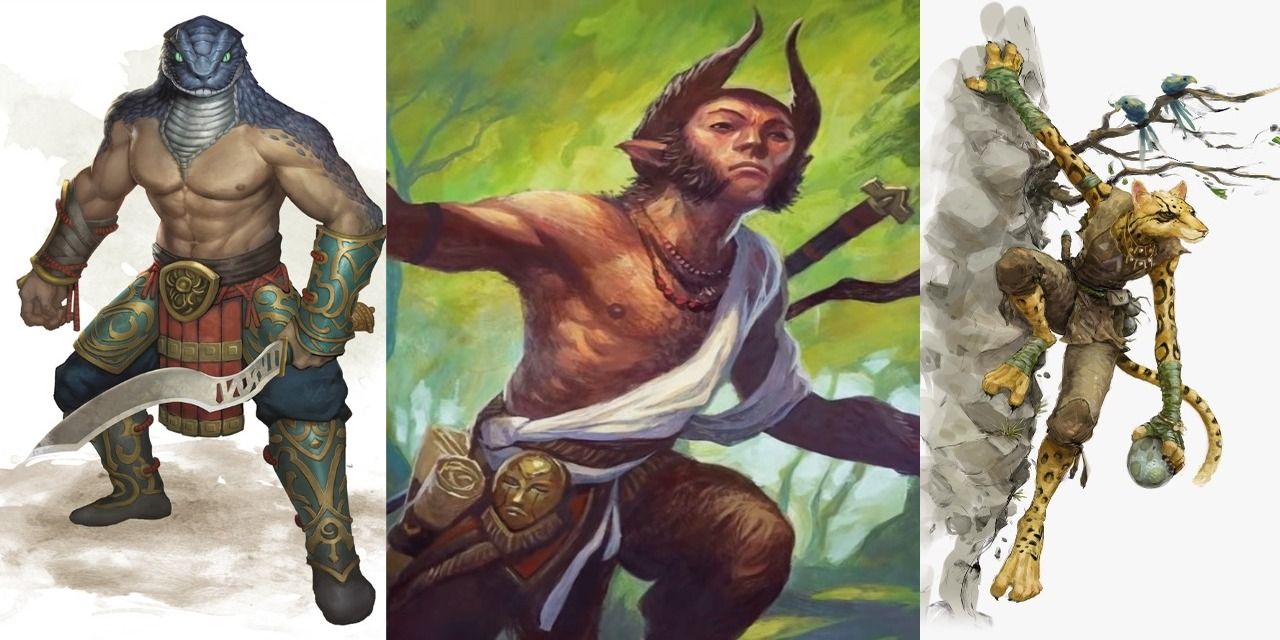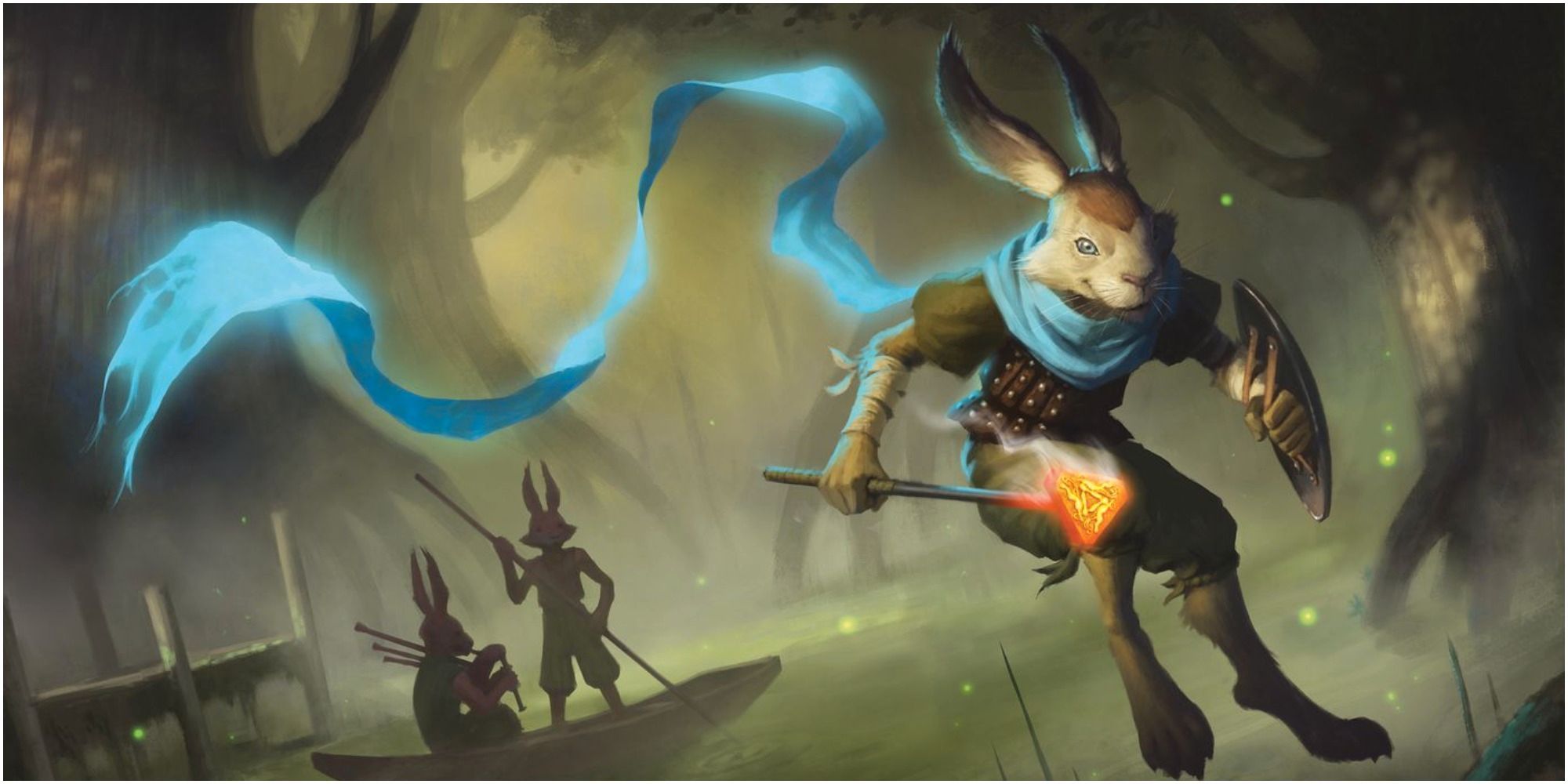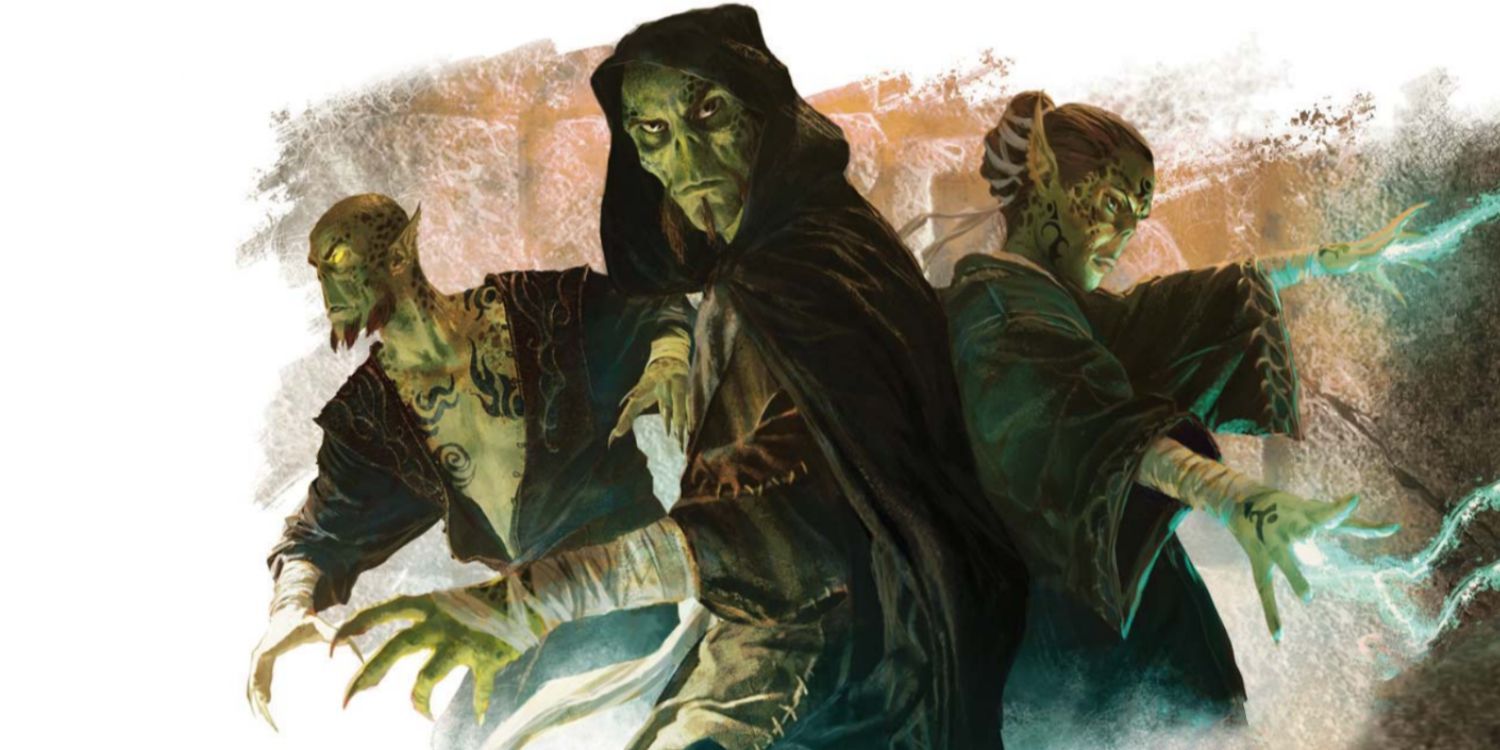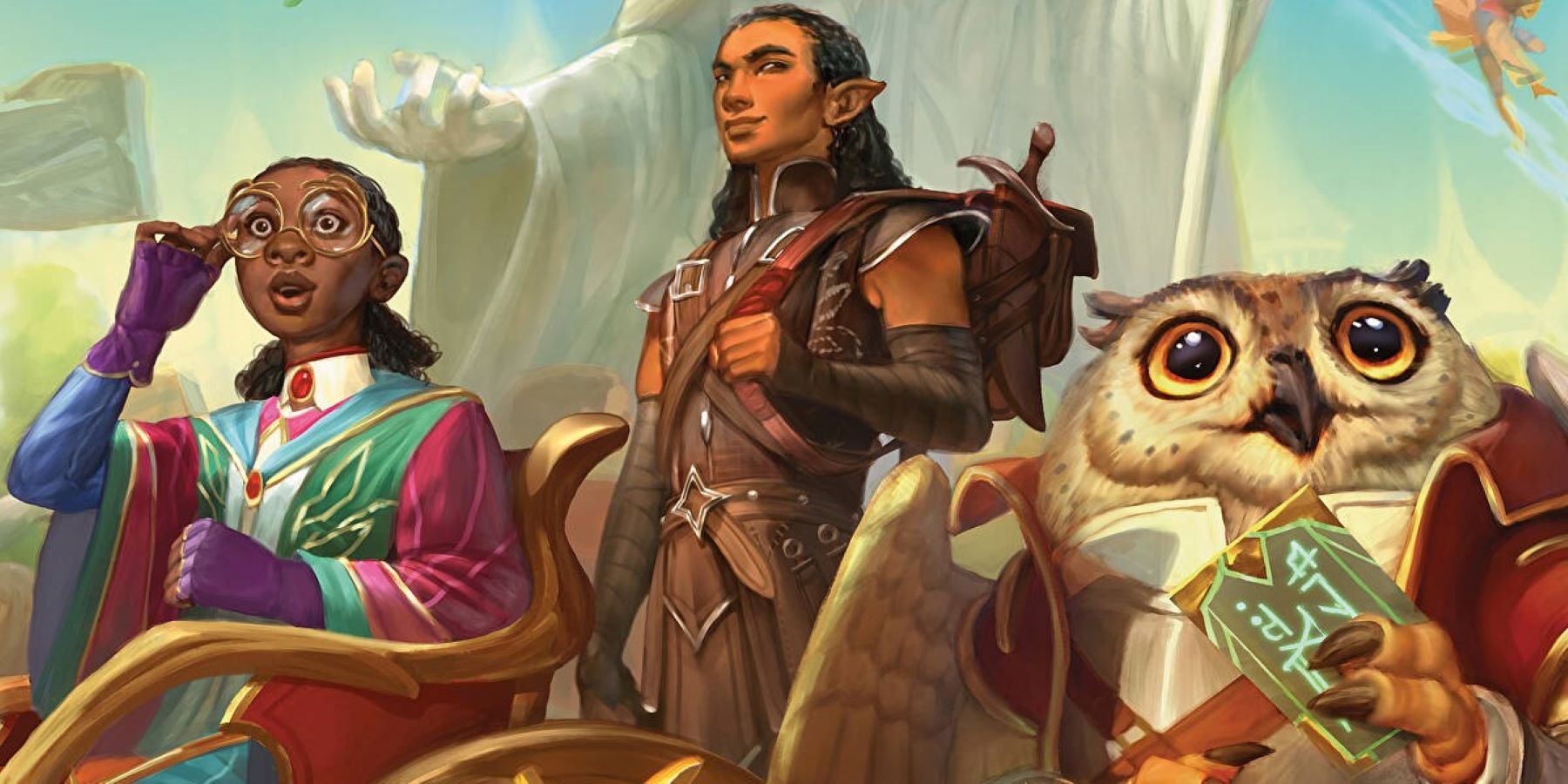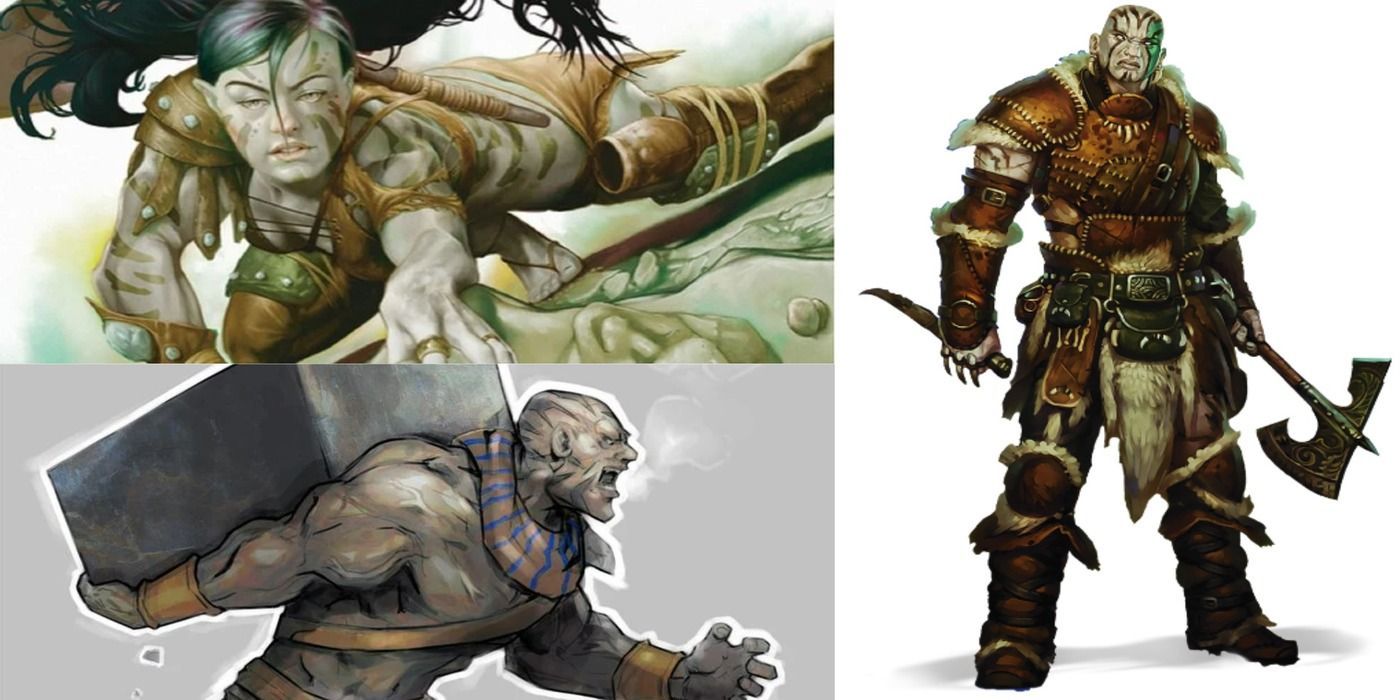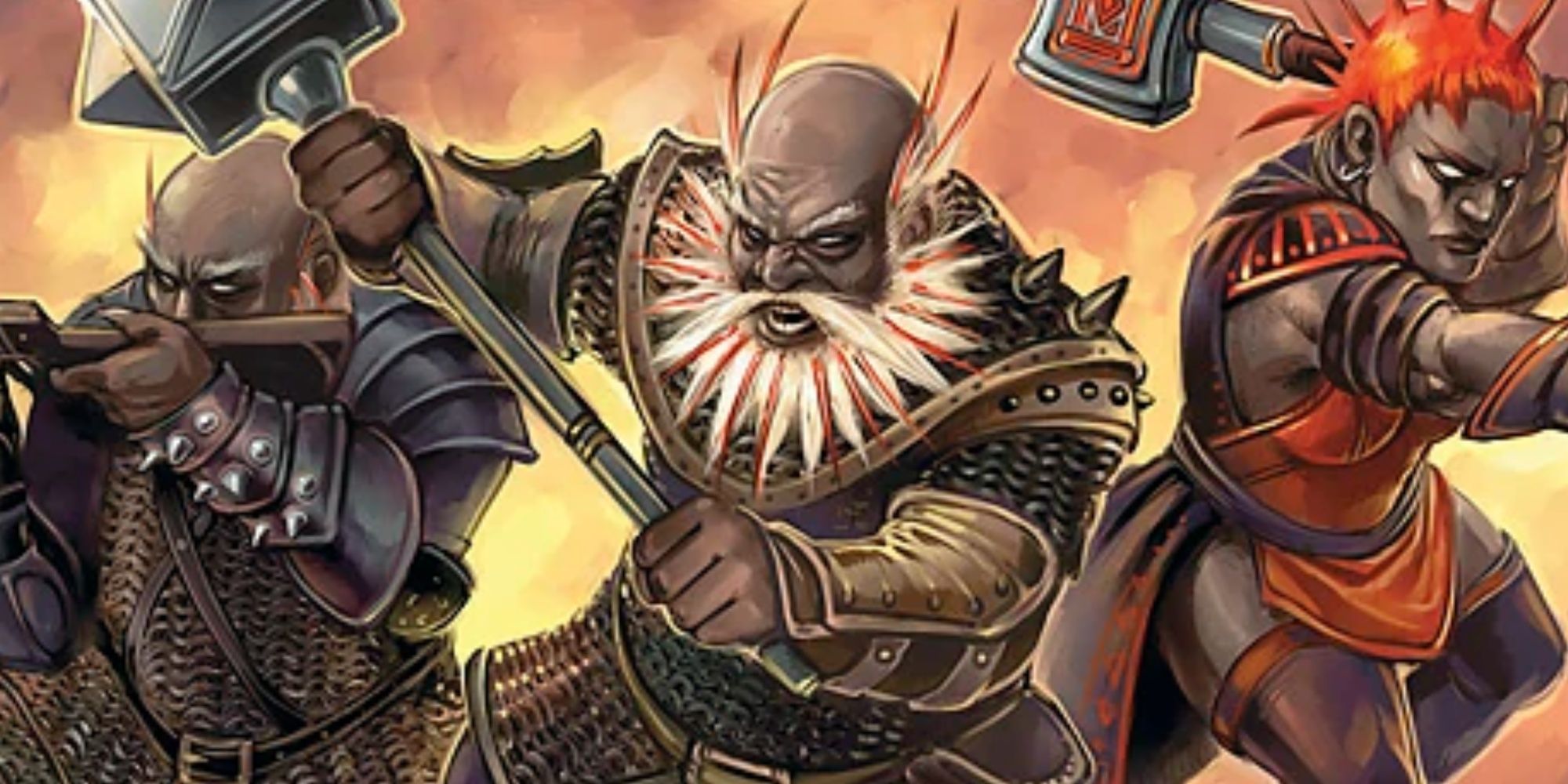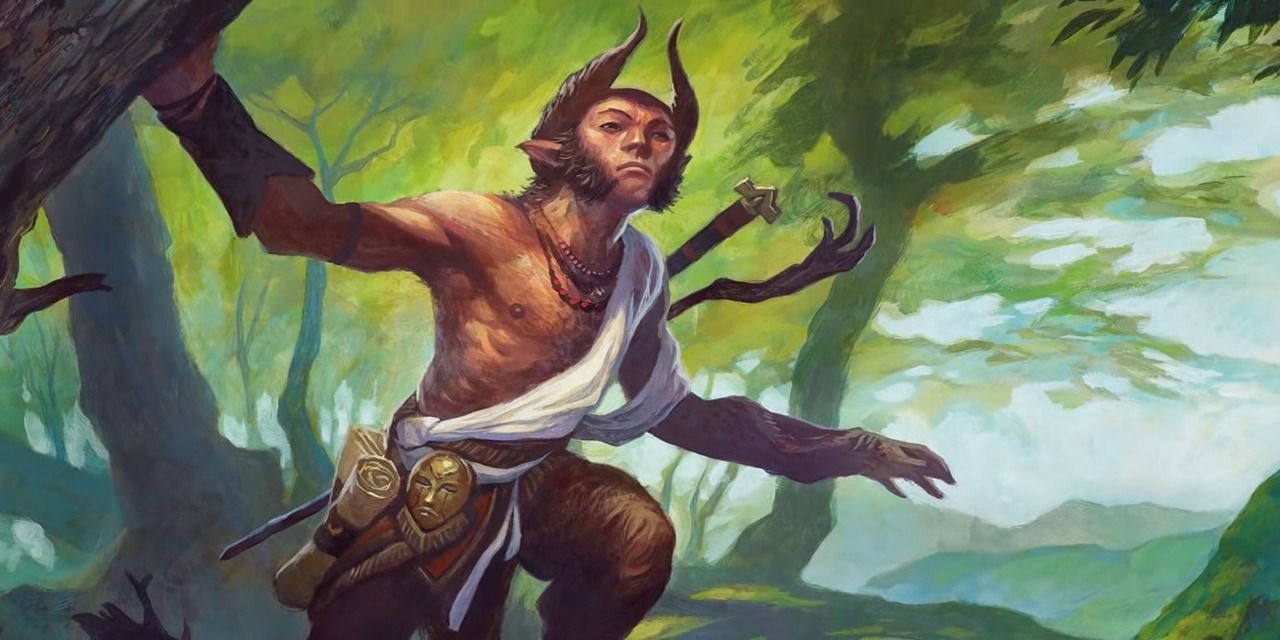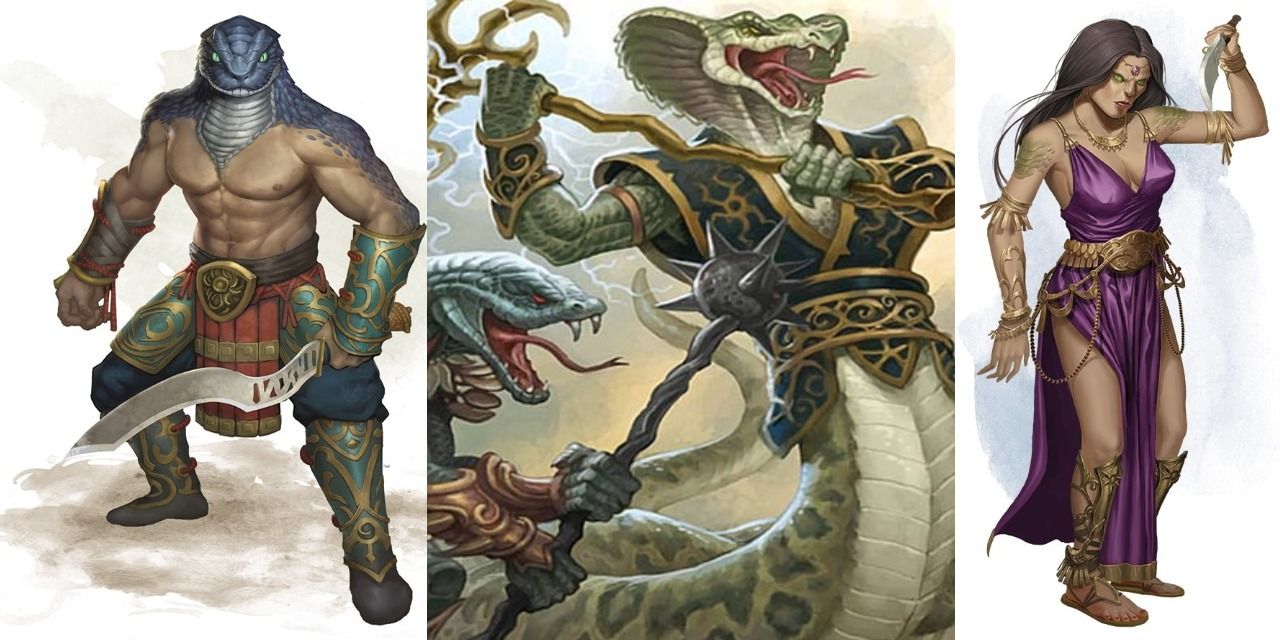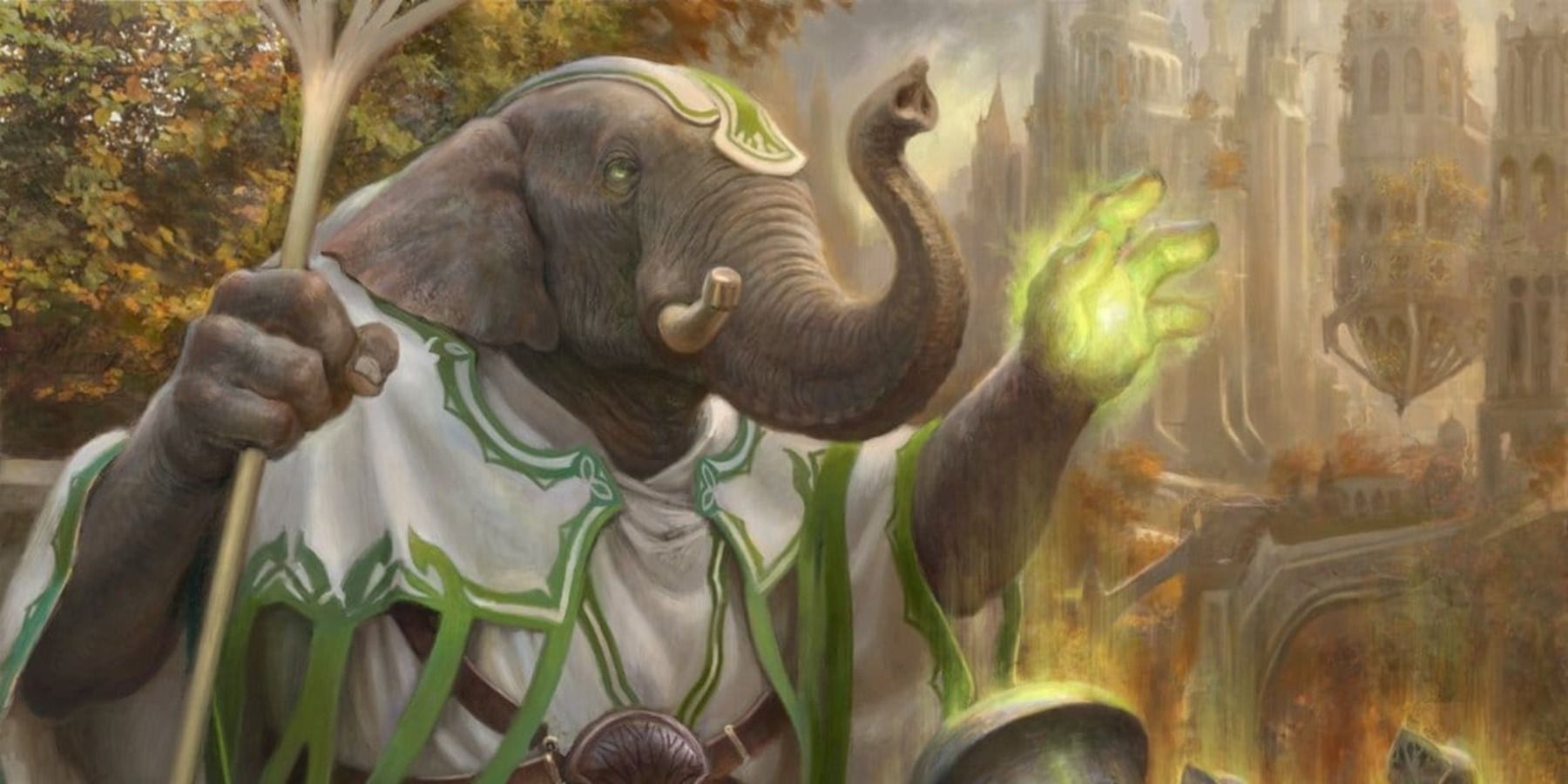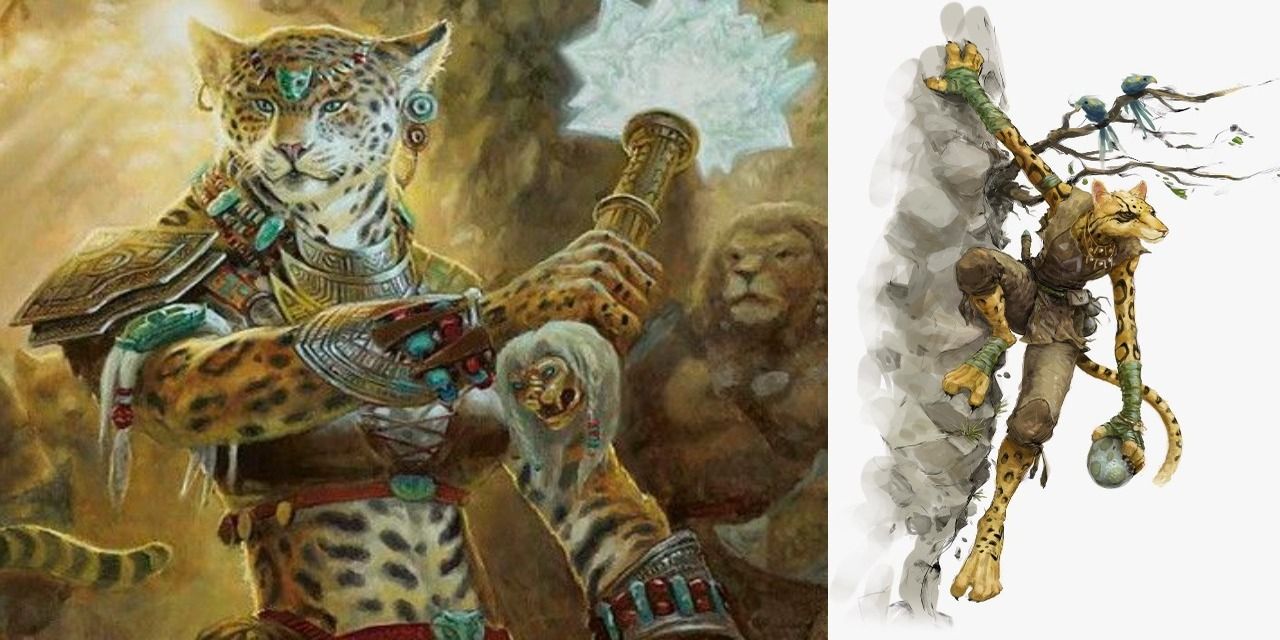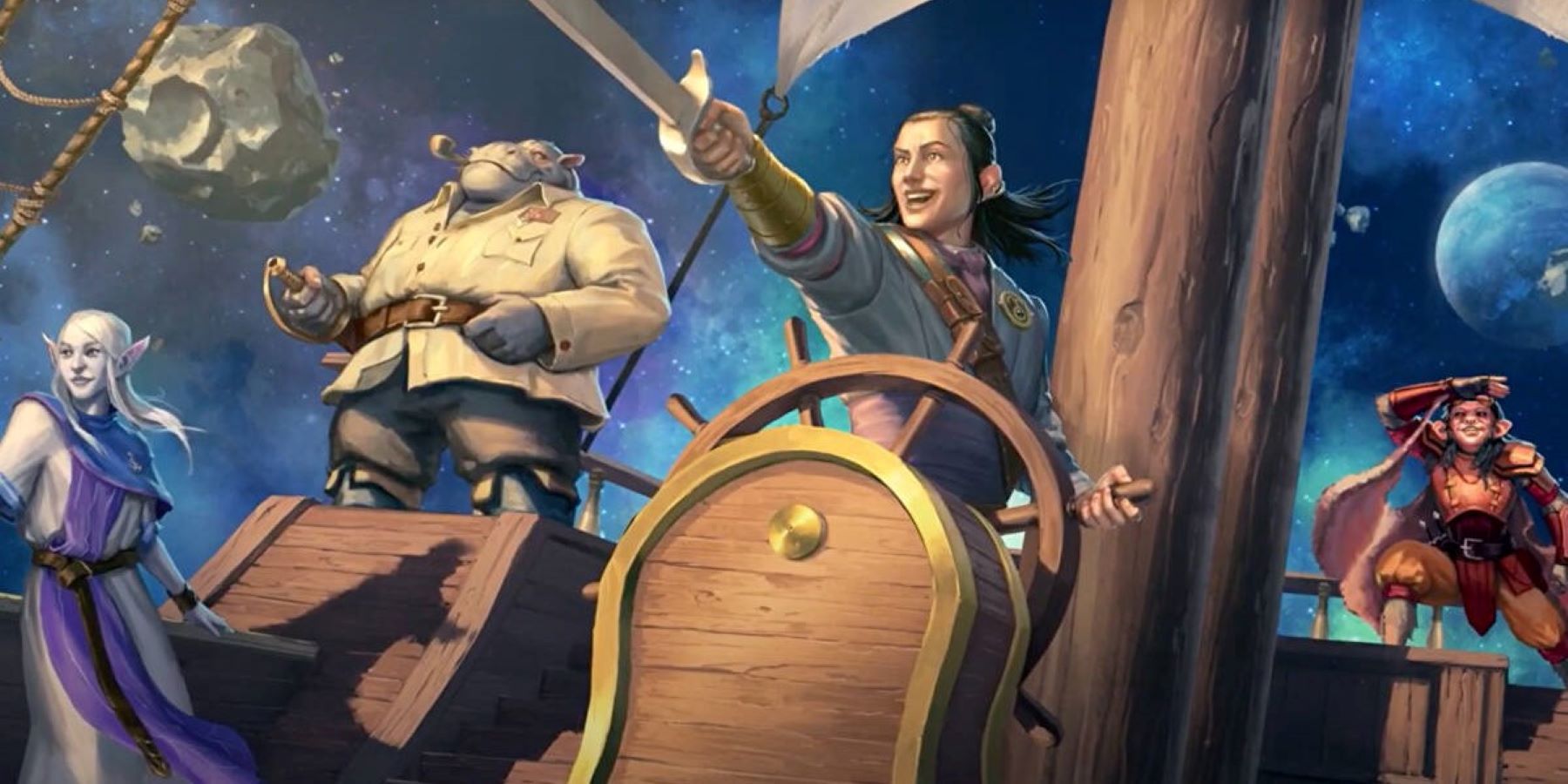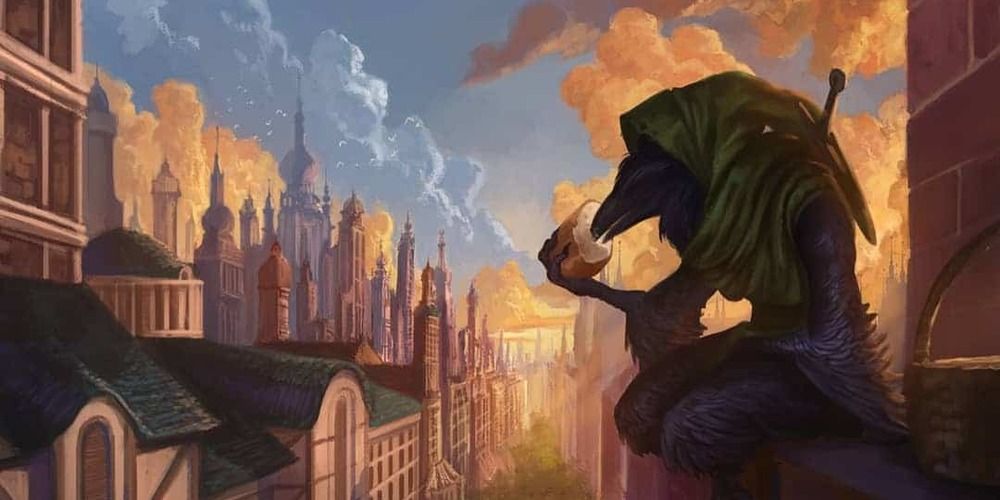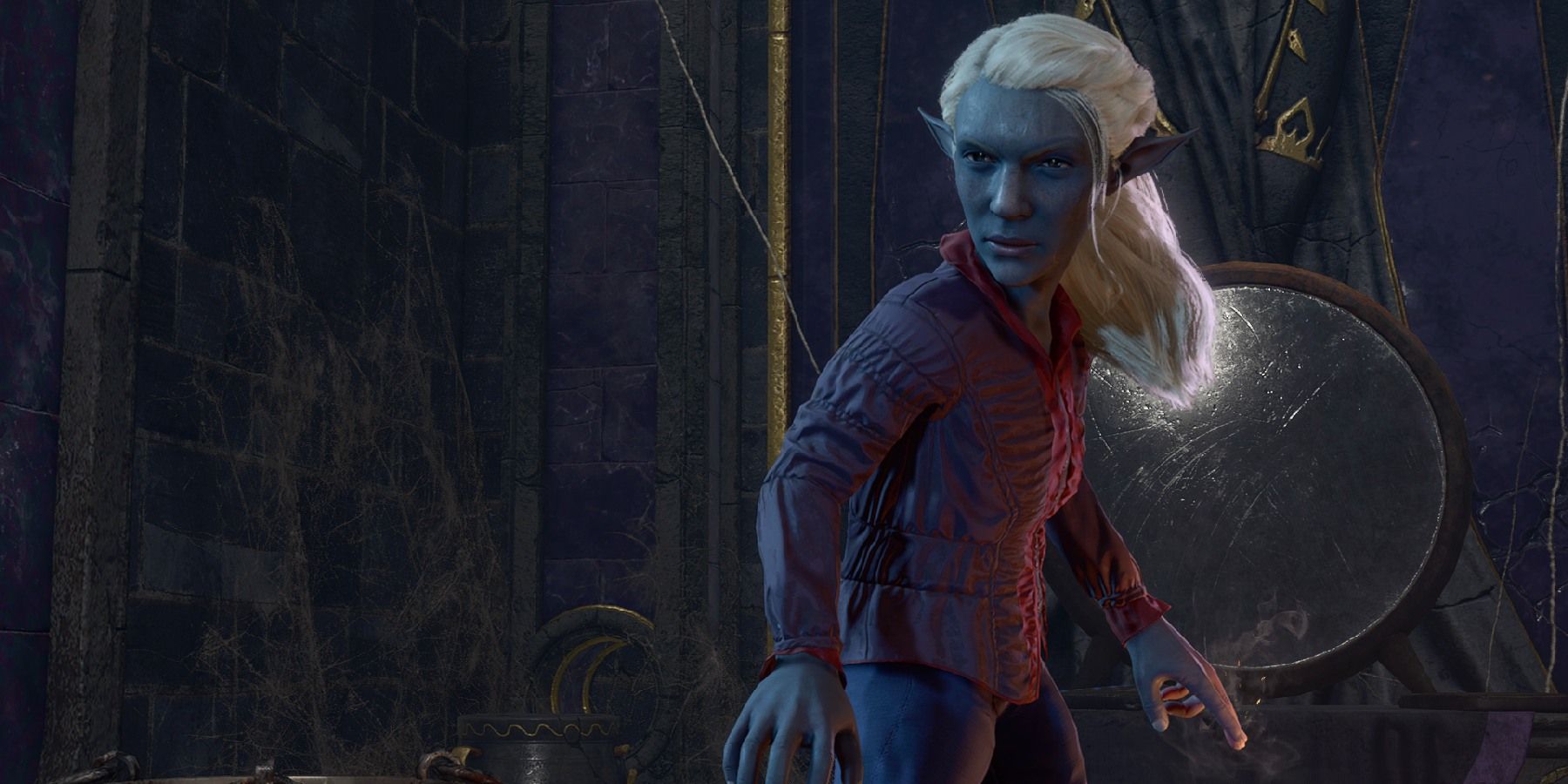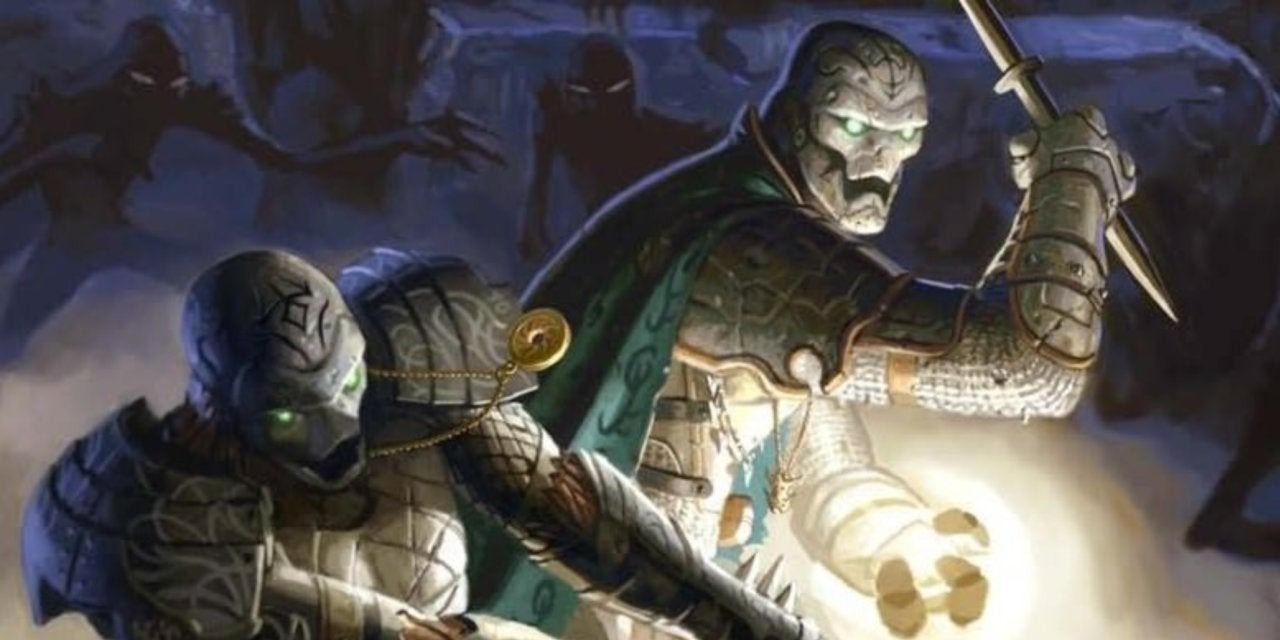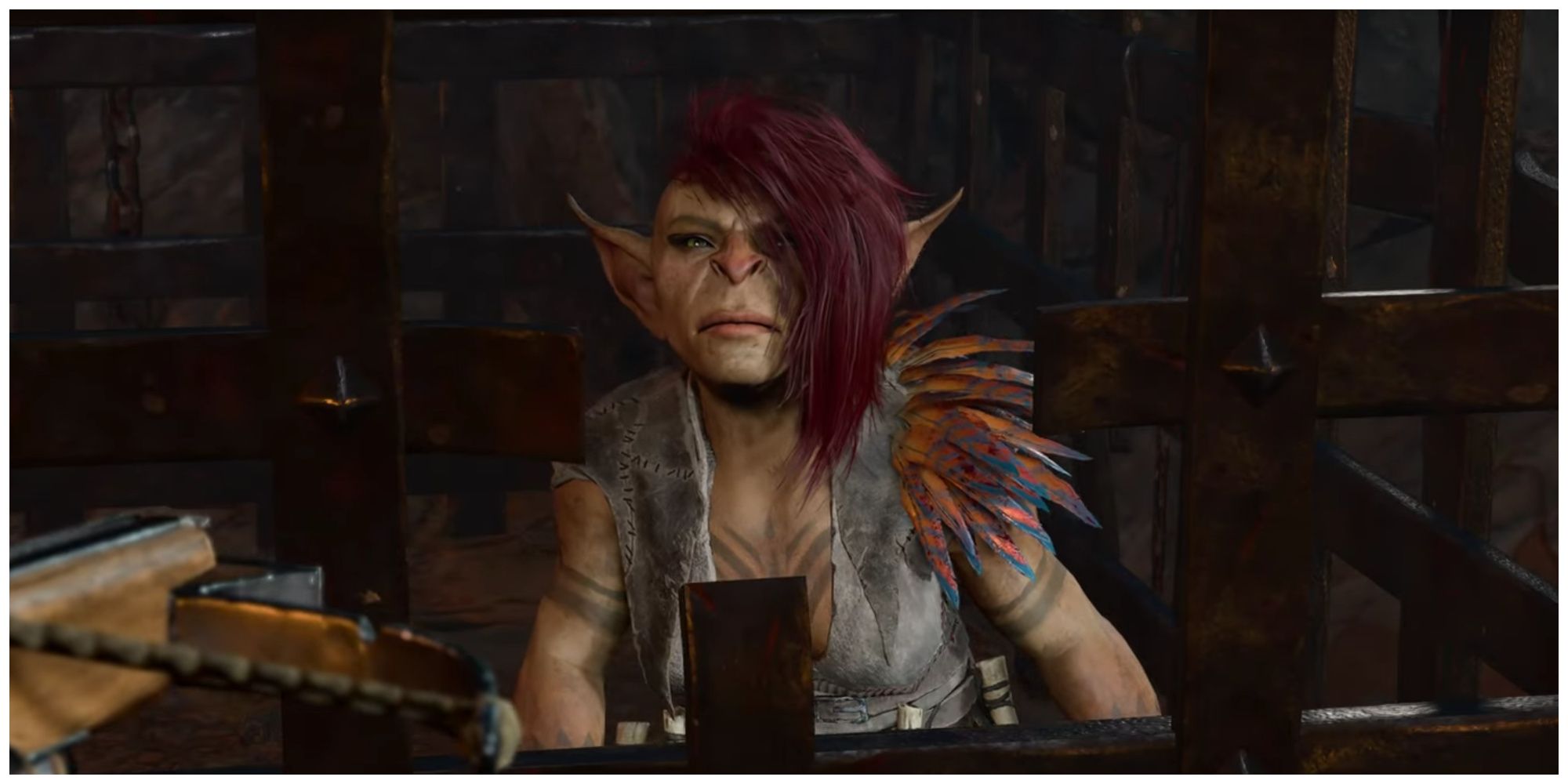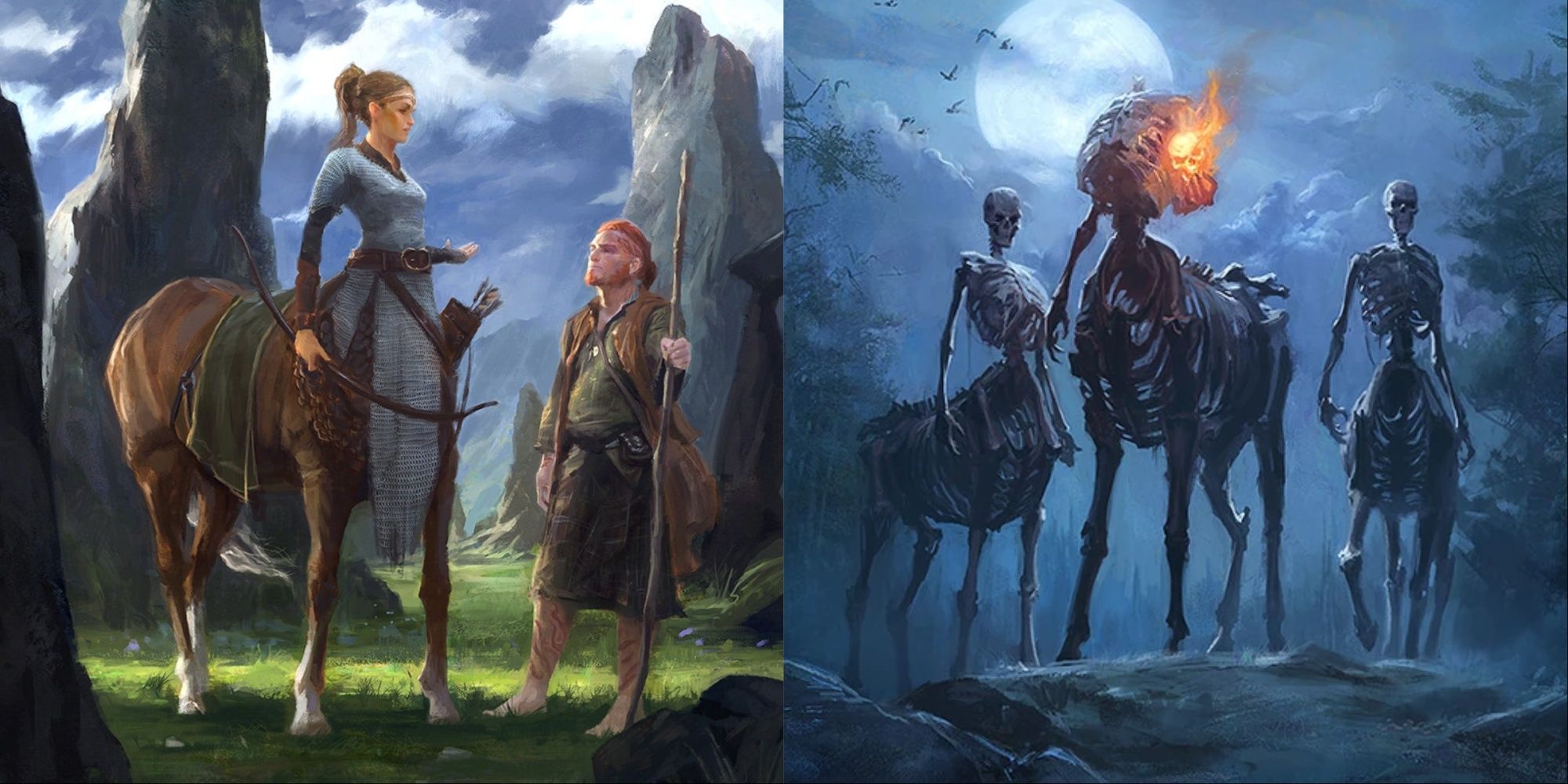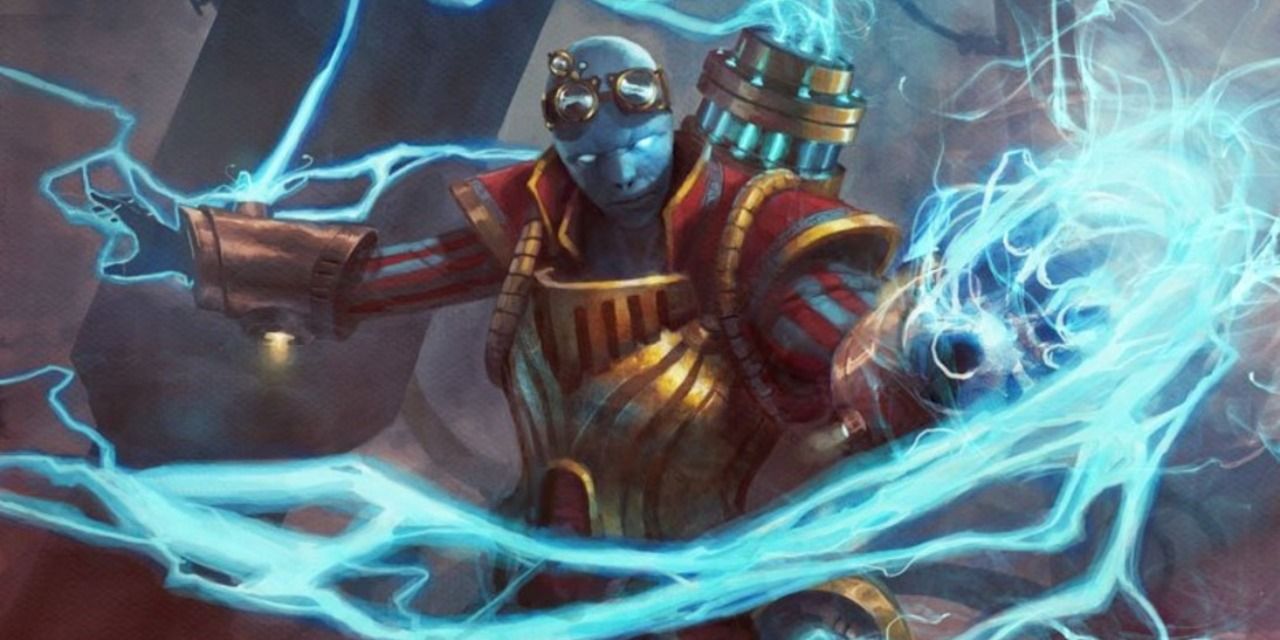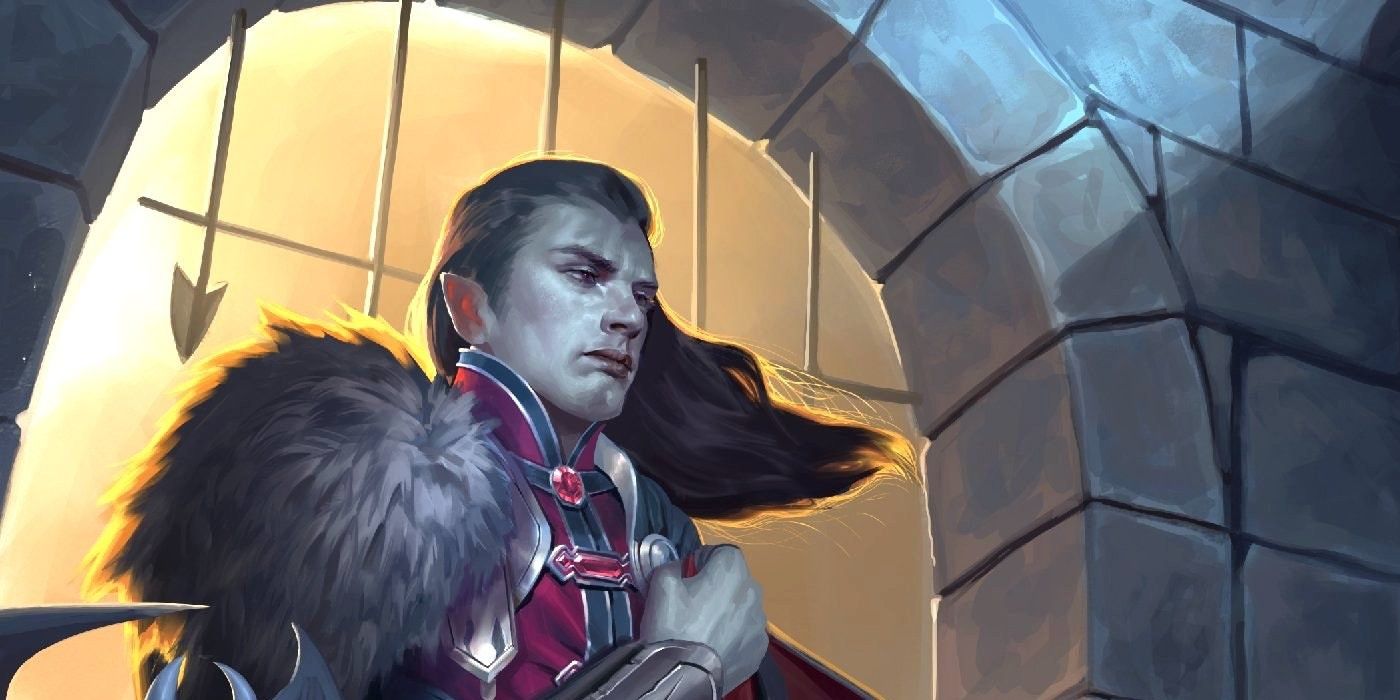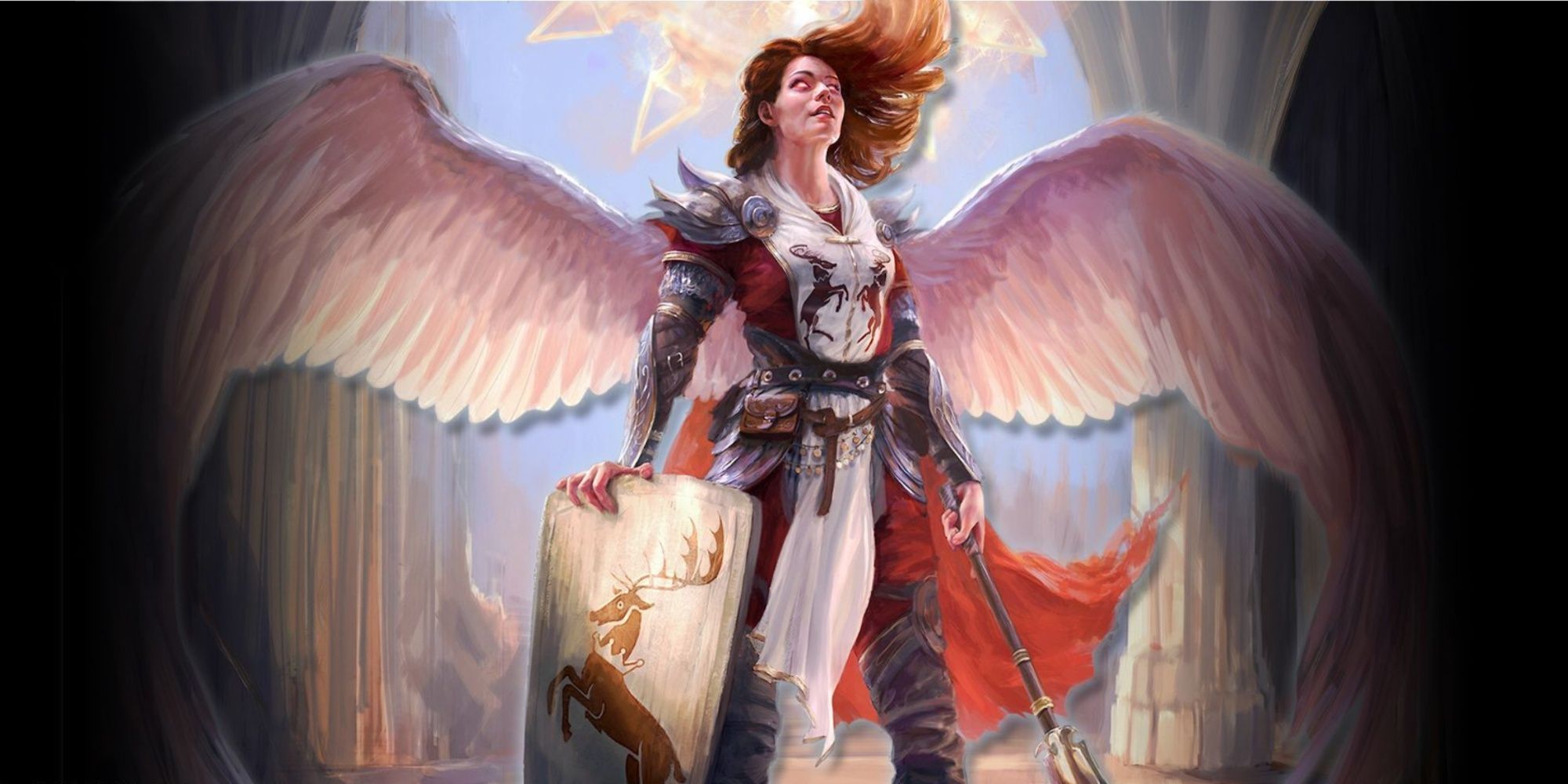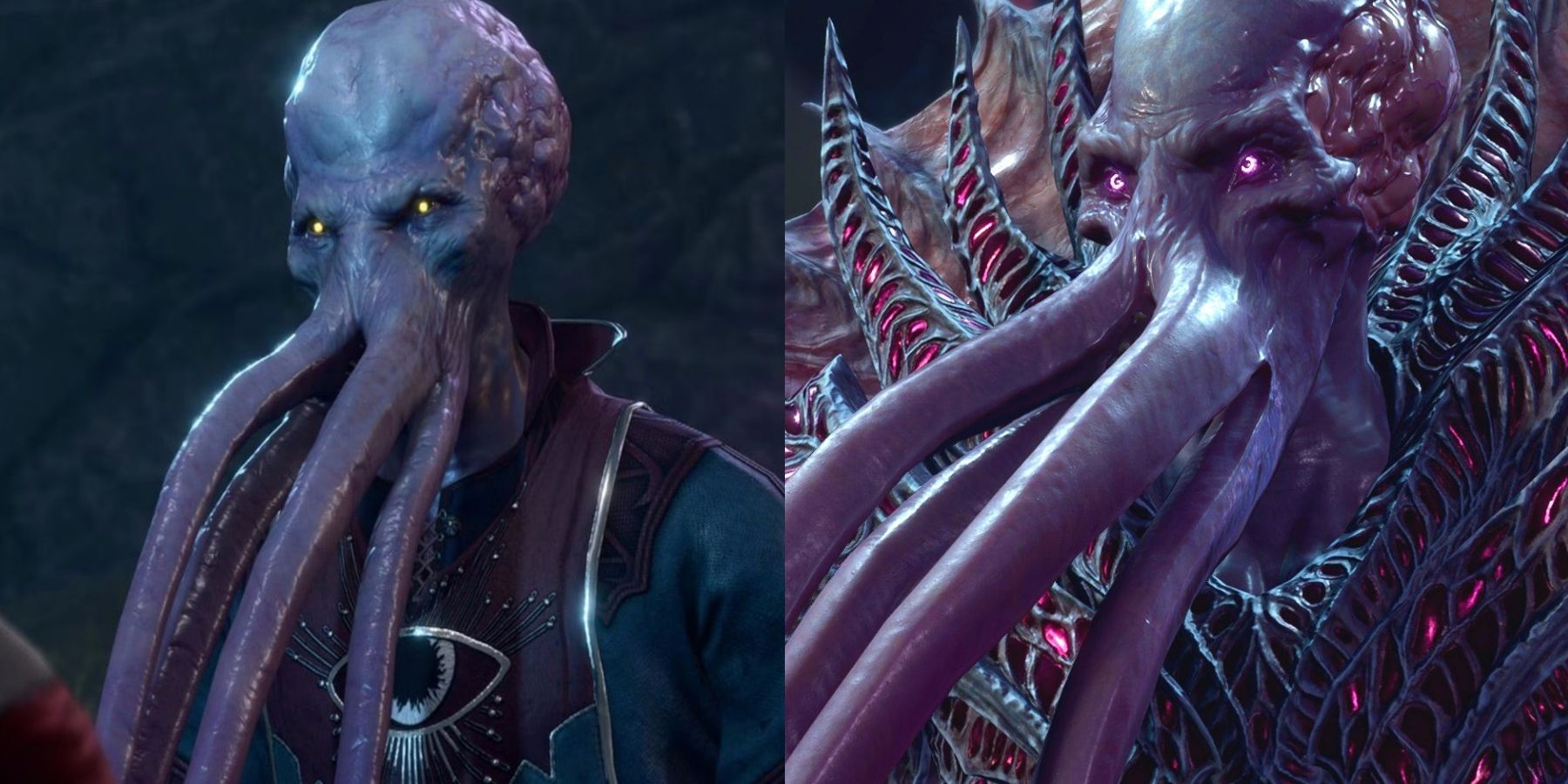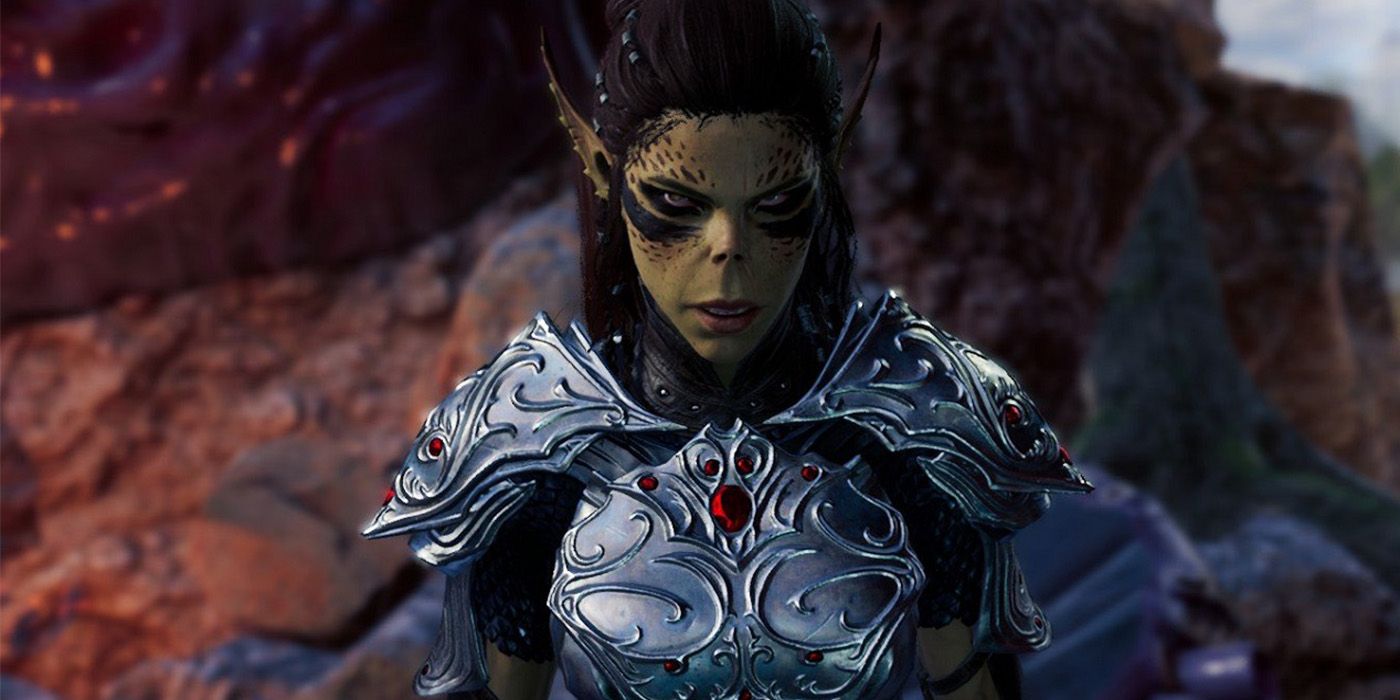Highlights
- D&D species have expanded, giving players more diverse choices for building their characters.
- The Harengon species offers high customization options, making it a top choice for any class.
- The Owlin species provides convenient flight abilities and enhanced stealth, making them ideal for Rogues, Bards, and Rangers.
An expansion in the Dungeons & Dragons universe can mean a lot of different things; rulebooks, extra homebrew materials, or campaign and adventuring guides. A big part of lore and gameplay involves the species that make up the cultures and nations that serve as a backdrop for most adventures. The earliest incarnation of D&D only had a mere four choices: humans, elves, dwarves, and halflings.
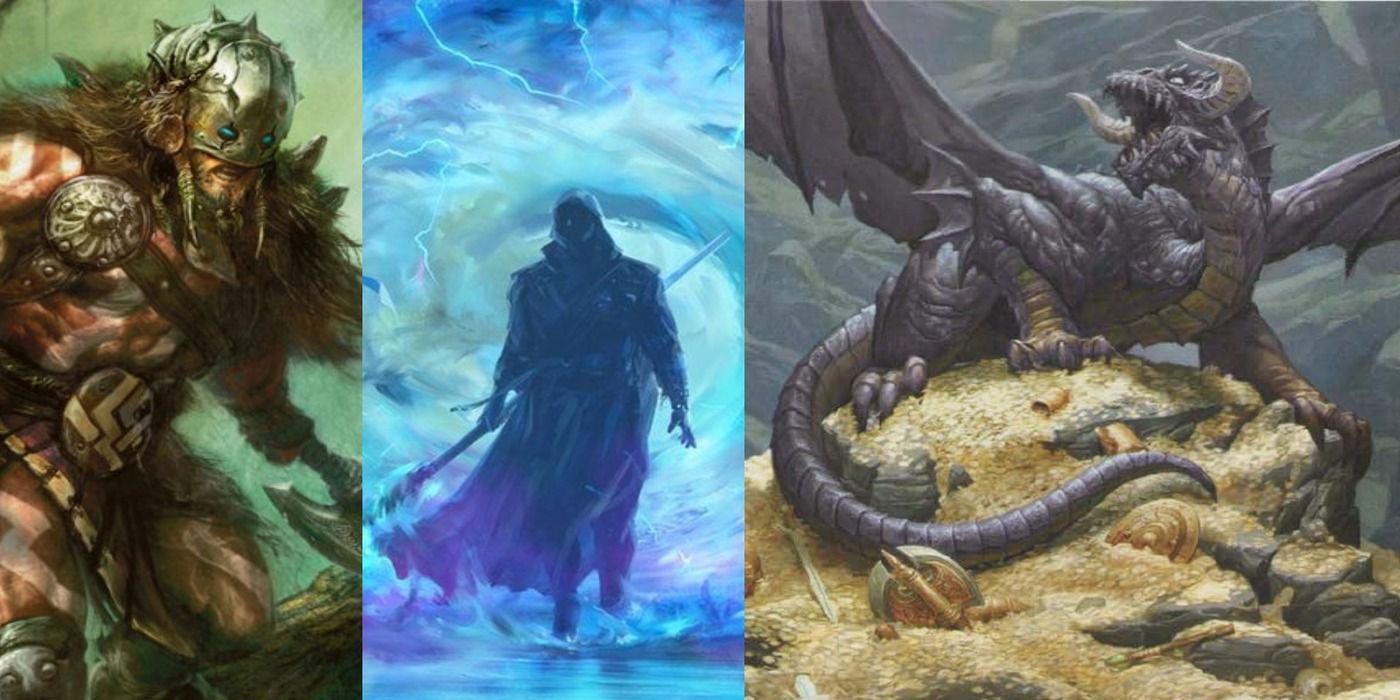
Dungeons & Dragons: 5 Tips To Create Great Homebrew Campaigns
When a Dungeon Master is looking to put together a homebrew campaign for their next Dungeons & Dragons session, they should keep these tips in mind.Today, the choices for species when building a character are much more varied. The vast library of lore currently consists of several books including, but not limited to, Volo's Guide to Monsters, Tasha's Cauldron of Everything, and Mordenkainen's Tome of Foes, along with a myriad of other expansion titles. These volumes contain a wealth of information about a variety of aspects of D&D, including additional playable species.
Updated February 1, 2024 by Kristy Ambrose: The choices for playable species in the Dungeons & Dragons universe are always getting more diverse, starting with the franchise-wide change to the more accurate use of the term "species" from what was formerly known as a race.
This new change isn't in every D&D-related resource yet, but eventually, every new book, expansion, or module will reflect this new lexicon. The popularity of D&D-based video games, such as Baldur's Gate 3, is also fueling interest in some of these unique and exotic races from D&D expansions.
1 Harengon
Wild Beyond The Witchlight
- Origin or Homeland: The Feywild, although they count as Humanoid creatures as opposed to Fey.
- Size: Medium to small, chosen during the character creation process.
- Bonuses: There are various choices for ability score increases depending on the exact build.
One of the newest additions to D&D is already getting some extra attention. New species that are connected to the Fey in some form or other are a growing trend, and those in animal form also seem to be growing in popularity. The Harengon embodies both concepts.
Players also love customization options, and the Harengon is one species that can compete with Humans in this regard. That could make it the best species in D&D 5e when it comes to choosing any species. When building a Harengon, it's possible to increase one ability score by 2 and increase another by 1 or to increase three different scores by 1. That means they are ideal for virtually any class, a major plus for gamers of any experience level.
2 Githzerai
Mordenkainen's Tome Of Foes
- Origin or Homeland: Currently the Astral Plane and other locations, but the origin of the species is unknown.
- Size: Medium
- Bonuses: Strength +2
D&D lore describes the Githzerai as the "cousins" of the Githyanki, who are known for their warrior skills but possess some of the same arcane abilities, like the innate use of the Mage Hand cantrip. The abilities that come with the powers of Githzerai Psionics also include Detect Thoughts or Shield Thoughts and resistance to psychic damage.
According to the lore of Mordenkainen's Tome of Foes, the Githzerai, and the Githyanki are not only at war with their former Illithid masters but also with each other. The history of this species includes a civil war between each faction, and the Githzerai use isolation, strict discipline, and a monastic lifestyle to hone their minds and survive.
3 Owlin
Strixhaven: A Curriculum Of Chaos
- Origin or Homeland: Descended from the giant Owls from the Feywild, but are classified as humanoid.
- Size: Small to medium
- Bonuses: Either a +2 and +1 increase to two stats or three +1 increases to three stats.
Another option for those players who are interested in building a character with convenient flight abilities, the Owlin was introduced as one of the many races attending the prestigious and popular Strixhaven University. They are one of the most versatile characters to build with their choices when it comes to bonuses, with only the Human or Human Variant being fair comparisons.
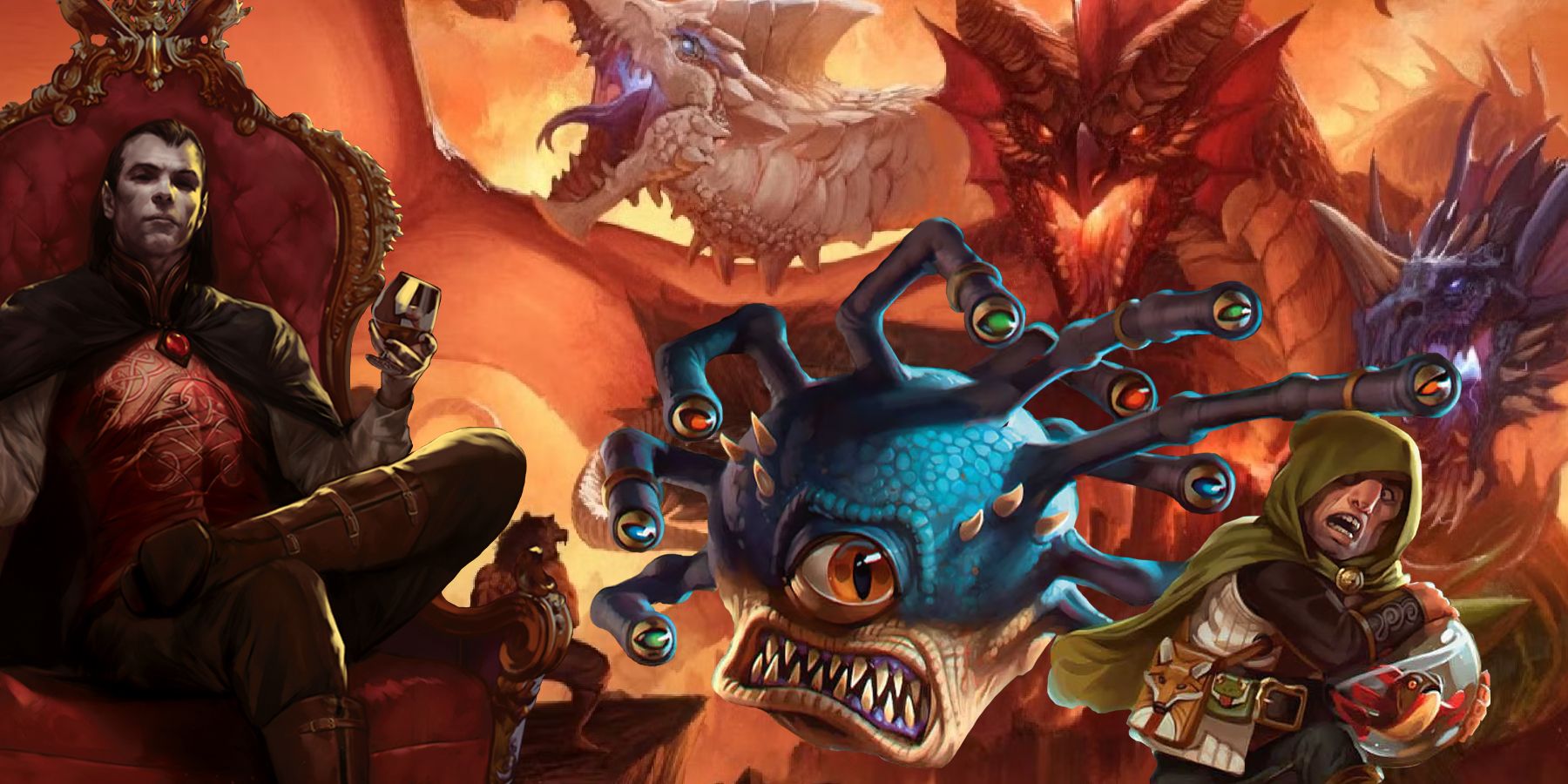
Strongest D&D Villains, Ranked
The world of Dungeons & Dragons is host to some of the greatest villains, but which takes the title as the strongest across the multiverses?Along with flight, the Owlin has enhanced Stealth abilities, making it an ideal choice for any class that needs to move unseen which is virtually all of them. Darkvision is also a nice perk, and all of these combined make exceptional Rogues, Bards, and Rangers.
4 Goliath
Elemental Evil Player's Companion
- Origin or Homeland: Above the treeline in the high mountains throughout Faerûn.
- Size: Medium
- Bonuses: Strength +2, Constitution +1
As a species, the Goliath people tend to be quiet, mysterious, and reclusive. That's one of the reasons they've chosen the harsh, grassless mountains as their home. Given a Goliath's talents for athleticism and survival and the importance of a fair fight in their culture, this is one of the best species to add to a D&D party.
The player must write a believable story that would bring them down from their stark homeland to a campaign setting, which is part of the adventure. This is one of those moments when you sit down with the DM to create a believable backstory.
5 Duergar
Dungeon Master's Guide
- Origin or Homeland: The Underdark
- Size: Medium
- Bonuses: +4 to hit, +2 to Constitution, +1 to Strength
Also known as grey dwarves or "underdwarves," the Duergar are part of the Underdark population along with Drow, Deep Gnomes, and other creatures. Their culture is unforgiving and hardy, leans more into Evil alignments, and they also tend to be cynical people who use curse words a lot.
Some D&D players will recognize the Duergar as slavers and looters, and this isn't far from the truth. Their fortresses in the Underdark are some of the most impressive in either the surface world or the Underdark, and some scholars opine that this species could one day rule the whole subterranean region.
6 Satyr
Mythic Odysseys Of Theros
- Origin or Homeland: The Feywild and the Cloak Wood of West Faerûn.
- Size: Medium to Small
- Bonuses: Dexterity +1, Charisma +2
Playing a Satyr is a unique experience in part because of their connection with the Fey, or the Fairy Folk of the D&D universe. Their reputation for debauchery and good dirty fun is well-earned, and although they can be any alignment they're often Chaotic or Neutral.
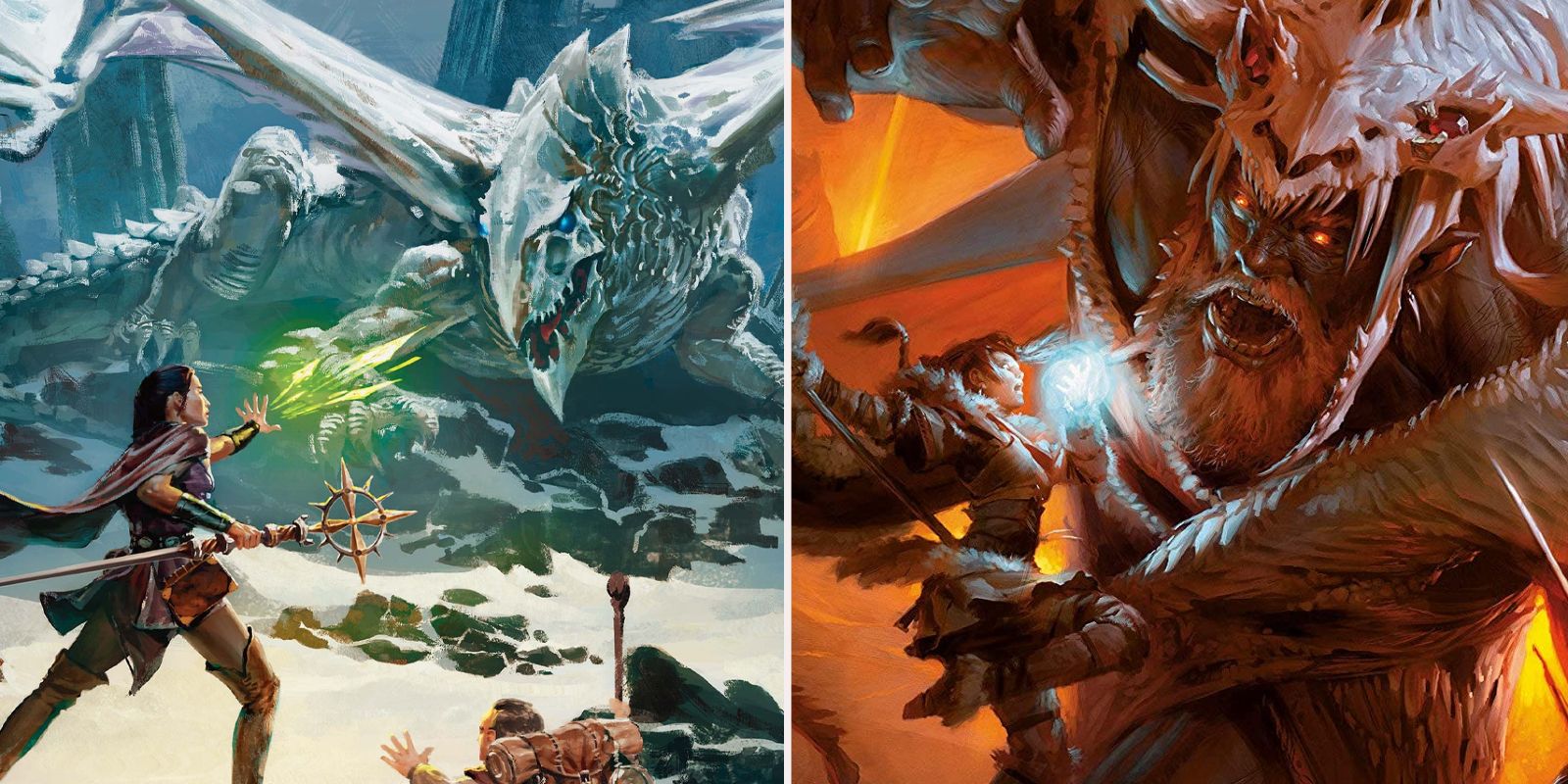
The 25 Most Useful D&D 5e Spells Players Should Have
Here are some helpful Dungeons & Dragons 5e spells that any magic-using player should make use of during their adventures.This is one of the best 5e species for classes that require any kind of persuasion, entertainment, or covert activities. With a generous Charisma bonus and the ability to use a pan flute as a weapon, Satyrs make natural Bards. Their connection with the wilderness makes Druids and Rangers equally viable, depending on the dice rolls for different stats.
7 Yuan-Ti Pureblood
Elemental Evil Player's Companion
- Origin or Homeland: Various locations throughout Faerûn.
- Size: Medium
- Bonuses: Charisma +2, Intelligence +1
The Yuan-ti Purebloods are the most human-looking of all the Yuan-ti variations. The other two, half-bloods and abominations, are often cast as monsters or enemies in a D&D campaign. The Yuan-Ti Pureblood aren't the only species on this list that's prone to Neutral Evil, but they're the most notorious for being cast in the role of the villain.
The Yuan-Ti Pureblood is one of the best D&D species for a magic user because it's a natural choice if you're looking for an Intelligence bonus. Any class that requires a bit of extra Charisma is also a good choice, except the perpetually good-aligned Paladin, but a creative player could make it work.
8 Loxodon
Guildmasters' Guide To Ravnica
- Origin or Homeland: Native of Ravnica.
- Size: Medium to large
- Bonuses: +2 Consitution, +1 Wisdom
There are a lot of advantages to playing the Loxodon character when it comes to handy abilities and physical advantages, and that goes well beyond a higher-than-average carrying capacity and being able to use a trunk as a snorkel. Loxodon have additional armor abilities that scale with their Consitution, and an increased resistance to being charmed or frightened.
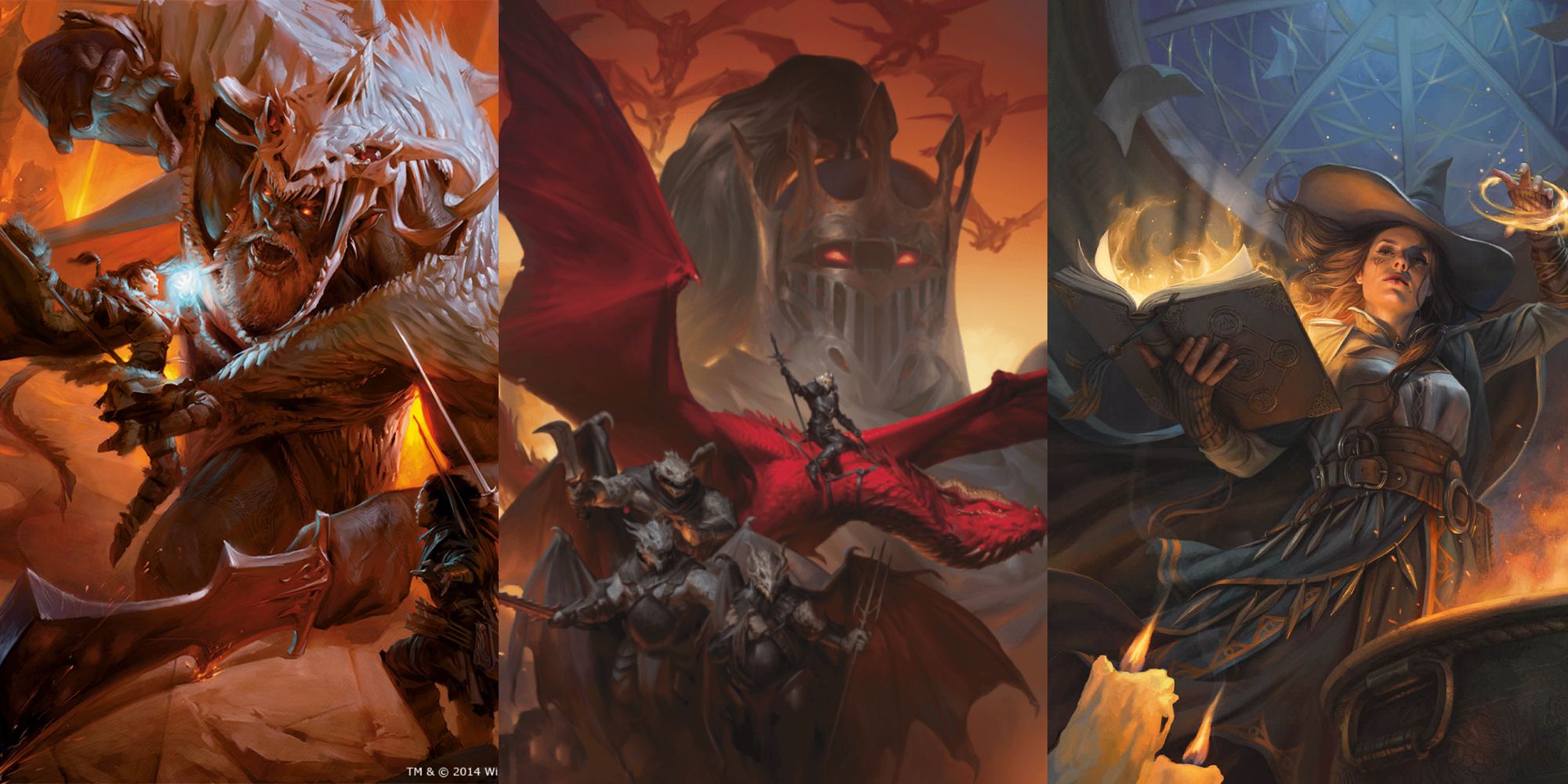
Dungeons And Dragons: 14 Best Feats For Fighters To Take
These feats are guaranteed to bring the edge to any Fighter character in Dungeons & Dragons.These traits make them ideal healers and party leaders. There are a lot of Loxodon Clerics and Paladins, as this is one of the best 5e species for these tasks. However, one feature that players might find limiting is their stubborn adherence to Lawful, and often Good, alignments.
9 Tabaxi
Volo's Guide To Monsters
- Origin or Homeland: Nexal, part of the ancient Maztica Kingdom.
- Size: Medium to small
- Bonuses: Dexterity +2, Charisma +2
Agile, sleek, and graceful, this isn't just one of the best choices for the D&D player who's also a cat person. The bonuses and special abilities the members of the Tabaxi possess make them an ideal choice for virtually any class, but their obsession with history and ancient artifacts means that they're often Bards or Clerics.
Since the Tabaxi species is about the same size as humans they also make good Fighters or Paladins. They are excellent predators, experts at stalking and hiding, while at the same time being almost impossible to track themselves.
10 Giff
Spelljammer: Adventures In Space
- Origin or Homeland: Somewhere in the Krynnespace, but the original location has been lost.
- Size: Medium to large.
- Bonuses: Either a +2 and +1 increase to two stats or three +1 increases to three stats.
Giff tells each other old stories of a planet filled with lush forests and sweet, abundant fruit, but they've been wandering in Krynnesapce so long that their planet of origin is forgotten even to them. Their highly militaristic society tends to be interested in straightforward and fundamental concepts like wealth, rank, and reputation.
Although these are heavy, large creatures with little to offer in the way of stealth or speed, their culture focuses on high-grade and modern weapons and the skill to use them. The Firearms Mastery and Astral Apark Ability compensate for their limitations in other roles.
11 Kenku
Volo's Guide To Monsters
- Origin or Homeland: Various locations throughout Faerun, mostly unknown.
- Size: Medium
- Bonuses: Dexterity +2, Wisdom +1
Be advised that this is one of the most difficult species to play, likely requiring some input and cooperation from the DM, but more experienced or ambitious players will enjoy the challenge. The Kenku don't have a language and rely entirely on mimicry for communication, which can be awkward, to say the least. When it comes to creative role-play, however, it's one of the best Dungeons & Dragons species.
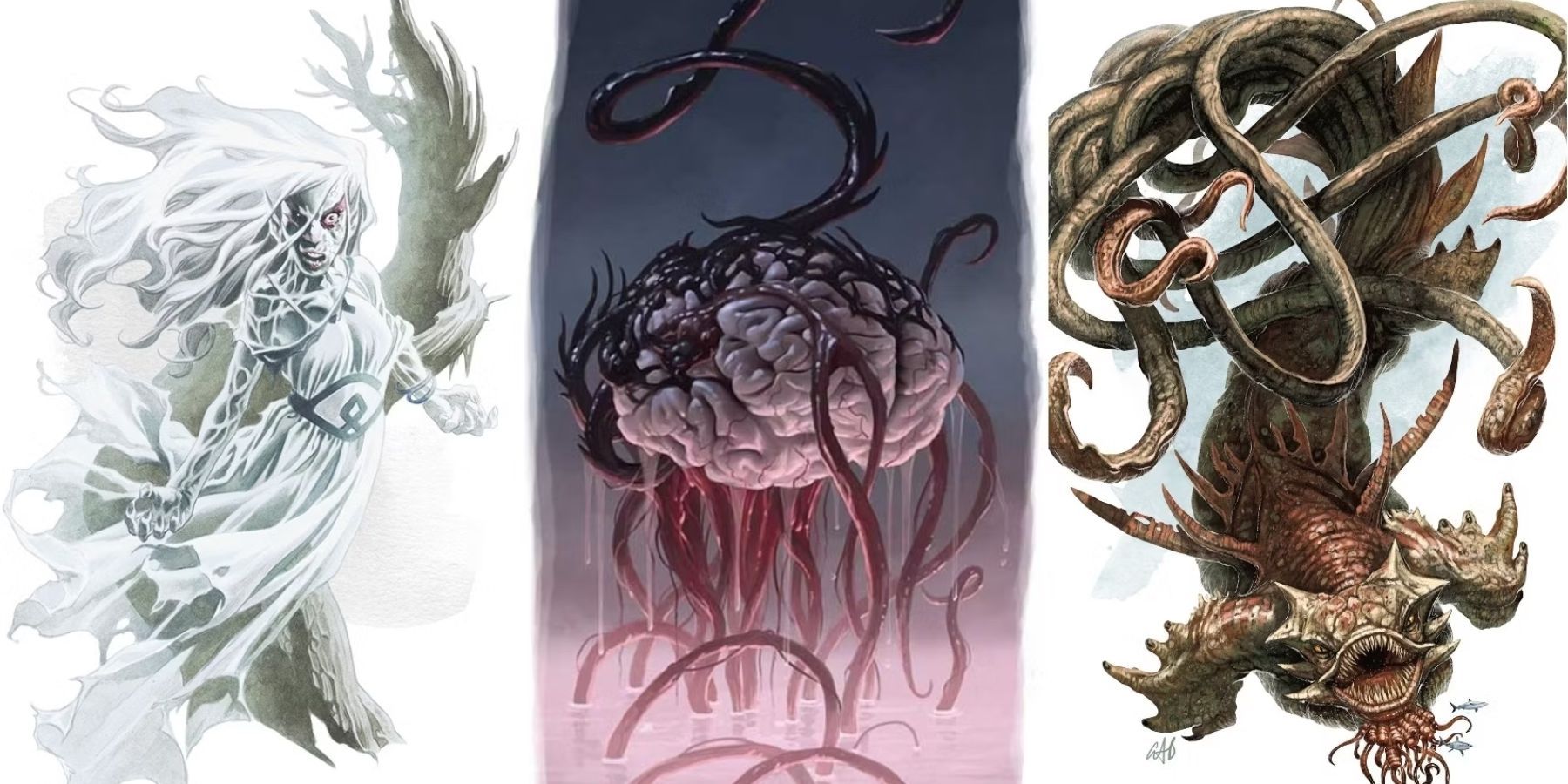
The 27 Strongest Boss Monsters In Dungeons & Dragons, Ranked
Dungeons & Dragons is plenty challenging, but these boss monsters make things tough for even the most experienced players.Other challenges that come with playing a Kenku include their social standing. They're often hidden from society completely, hiding in sewers and alleys, and just having one in an adventuring party can lower a group's reputation. The bonuses are worth the trouble, however, it's a great choice for a Cleric or a Thief.
12 Deep Gnome
Elemental Evil Player's Companion
- Origin or Homeland: Various locations throughout the Underdark and the Far North
- Size: Small
- Bonuses: +2 to Intelligence, +1 to Dexterity
Also known as Svirfneblin in their tongue, the Deep Gnomes spend most of their time dodging either Drow or Duergar in the Underdark. They're famous for their crafting and engineering skills, which are exceptional even by Gnome standards, which makes them some of the most talented people on the Sword Coast.
This way of life has made the Deep Gnomes a suspicious and secretive people, and they build their vast cities to be hidden from any outsiders. Their culture was very protective of their children, given that there were so few and they were often in danger of being captured, killed, or enslaved.
13 Warforged
Eberron: Rising From The Last War
- Origin or Homeland: The lands of Eberron
- Size: Medium
- Bonuses: Constitution +2, any other ability score +1
These are perhaps not a species at all, since they are constructs that were built by others, but the D&D jury is still out. Presently, the Warforged is a playable species that has gained traction not only because of the compelling mechanical aspects, but also for Marvel fans who wanted to build a character that mimicked Iron Man, or at least his famous suit.
This versatile Warforged is created through a ritual out of magical materials and has no gender, like any other construct. These factors can make the species seem restrictive when it comes to backstory or roleplay, but there's a lot of potential for players who want to build a soldier-like character with a flair for customization. The Warforged can even modify themselves to create a more individualized visage.
14 Goblin
Volo's Guide To Monsters
- Origin or Homeland: Ixalan, Zendikar, or Darkwood
- Size: Small
- Bonuses: Dexterity +2, Constitution +1
Goblins are usually cast in the role of minions or nameless foes in D&D adventures, so it's interesting to see them as playable characters. There are some advantages with the heightened Dexterity and Constitution, and Goblins have useful skills like Darvision and Nimble Escape.
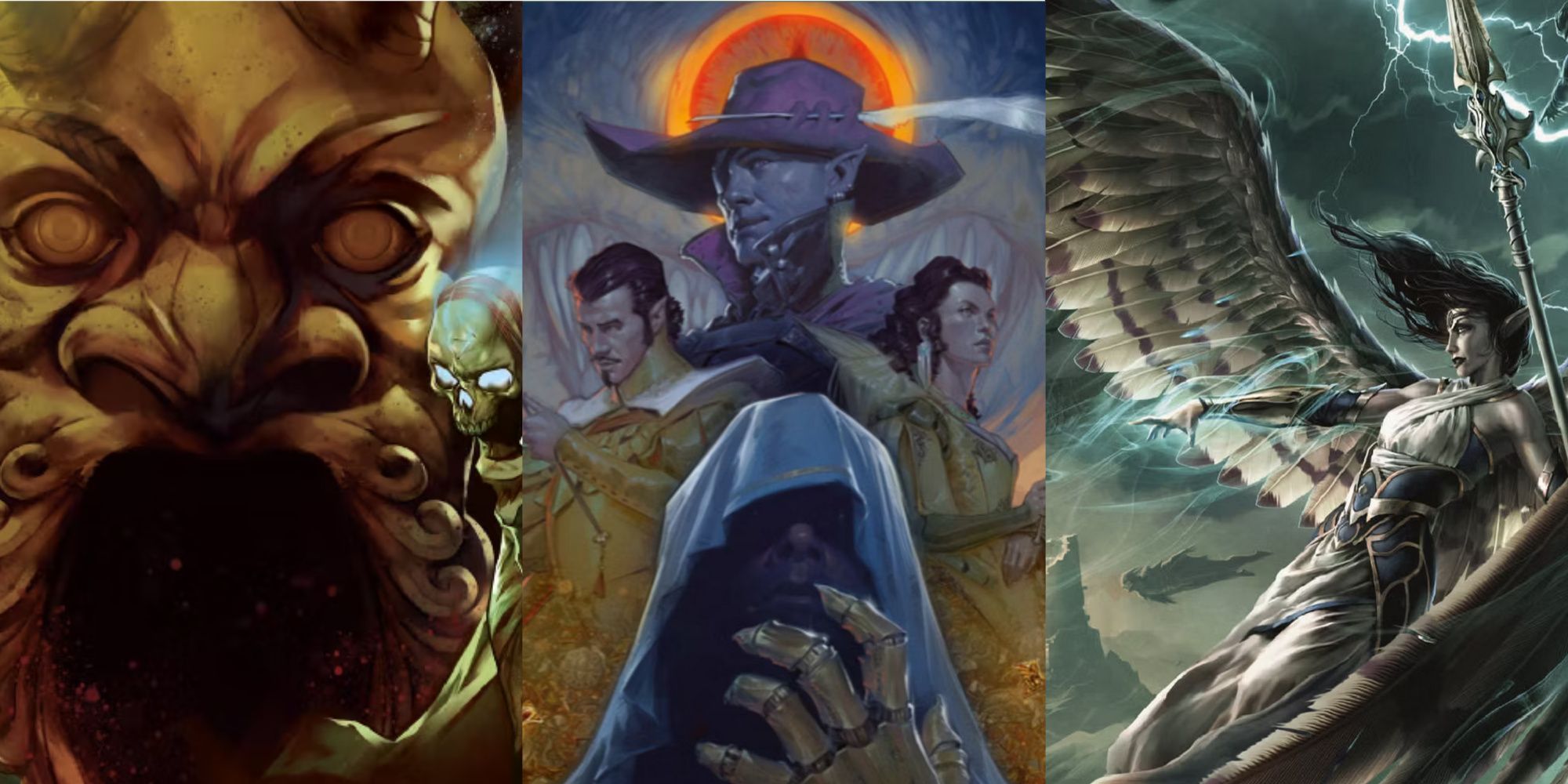
Best D&D Campaigns For Baldur's Gate 3 Fans, Ranked
Baldur's Gate 3 fans are likely to enjoy these DnD campaigns if they want to dive into the beloved tabletop game.There are other advantages to playing a Goblin depending on the subclass chosen, like the protection of the Zendikar Tribe or the Ixalan roots in the ancient Sun Empire. Their alignments can be either good or evil but are almost always Chaotic.
15 Centaur
Guildmaster's Guide To Ravnica, Mythic Odysseys Of Theros
- Origin or Homeland: Exandria or the Fey Realm.
- Size: Medium to large.
- Bonuses: Strength + 2, Wisdom + 1
Centaurs may be half-human and age the same way as humans, but in the D&D universe, they are considered Fey and speak the Common language along with the Sylvan tongue. They have skills that go along with being half-horse, such as a natural charge ability, and can use their powerful hooves as melee weapons.
The strength and speed of the Centaur make it ideal for any melee fighting class, and combined with a Wisdom bonus Rangers and Clerics are also good choices. The Equine Build has some drawbacks, like a limited capacity for climbing and using anything that requires hands or a smaller physique.
16 Vedalken
Guildmasters' Guide To Ravnica
- Origin or Homeland: Ravnica.
- Size: Medium
- Bonuses: Intelligence +2, Wisdom +1
The Vedalken are ardent perfectionists, but they do not despair in the imperfect. Instead, they see it as an opportunity to improve. That's an inspirational viewpoint, ideal for Clerics, Paladins, and other hopeful characters. It helps that the Vedalken are often of a lawful alignment as well.
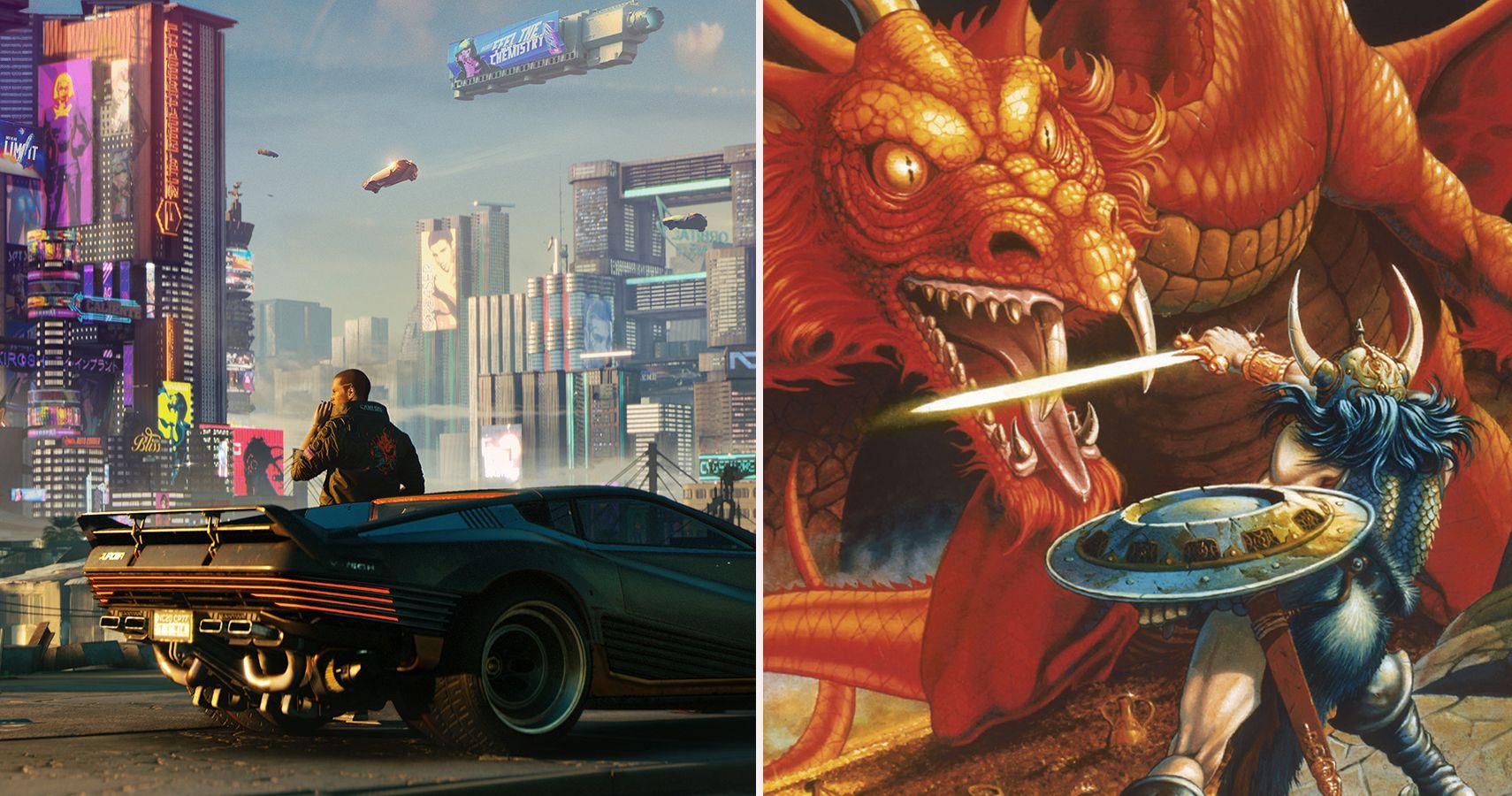
19 Pro Tips To Create A Cyberpunk D&D Campaign
While waiting for Cyberpunk 2077 to be released, here are 10 tips for putting together a cyberpunk Dungeons & Dragons campaign.The special abilities make the Vedalken interesting to play, and equally good in any class. Every Vedalken gets to choose between skills like Arcana, Medicine, or Performance when they roll their character thanks to the Tireless Precision talent, and their keen minds give them a bonus on all Intelligence, Wisdom, and Charisma throws.
17 Dhampir
Van Richten's Guide To Ravenloft
- Origin or Homeland: The Shadowfell, specific details determined for individuals via 1d8 roll.
- Size: Small to medium
- Bonuses: Increase any stat by +2 or two stats by +1.
The Dhampir is one of three Lineages, undead variations that are only available in the Ravenloft module. According to D&D lore, Ravenloft is located in The Shadowfell, the realm of the goddess Shar, so it's up to the DM if they want to allow the option outside of the Realm of Ravenloft.
Baldur's Gate 3 players who are interested in creating their version of Astarion in a table-top version of the game won't get much closer than the Dhampir. It's similar to a vampire spawn in the sense that they are not a true vampire, but they still have powers related to the undead beasts after surviving an encounter with one and are often the most adept at hunting, tracking, and killing them.
18 Aasimar
Volo's Guide To Monsters
- Origin or Homeland: Mount Celestia, a realm populated by Lawful Good deities.
- Size: Medium
- Bonuses: +2 Charisma
Part of a catalog of creatures that include a variety of lizard and snake people, the Aasimar stands out as an anomaly in Volo's Guide to Monsters. They have all the powers that a player would expect a celestial being to have, like Darkvision and resistance to necrotic and radiant damage. For players that want to play a good character, even a hero, the Aasimar is one of the best species in D&D 5e.
Some players might be put off by what seems like a rigid adherence to benevolent classes and the Lawful Good alignment, but that's not always the case. There has to be a reason that an Aasimar leaves their lofty homeland, and sometimes it's because they are outcasts that have been banished because of their neutral or even evil alignments.
19 Illithid
Monster Manual 1st Edition
- Origin or Homeland: The Far Realms, The Underdark
- Size: Medium
- Bonuses: Magic Resistance and Arcane Knowledge
More often cast as villains, the interest in playing monsters like Illithids is now a possibility, giving both gamers and Dungeon Masters some unique opportunities when it comes to storyline and role-playing. Illithids, or Mind Flayers, are often Lawful Evil but there have been exceptions, and some of the more fluid examples can be either NPCs or player characters if the DM condones it.
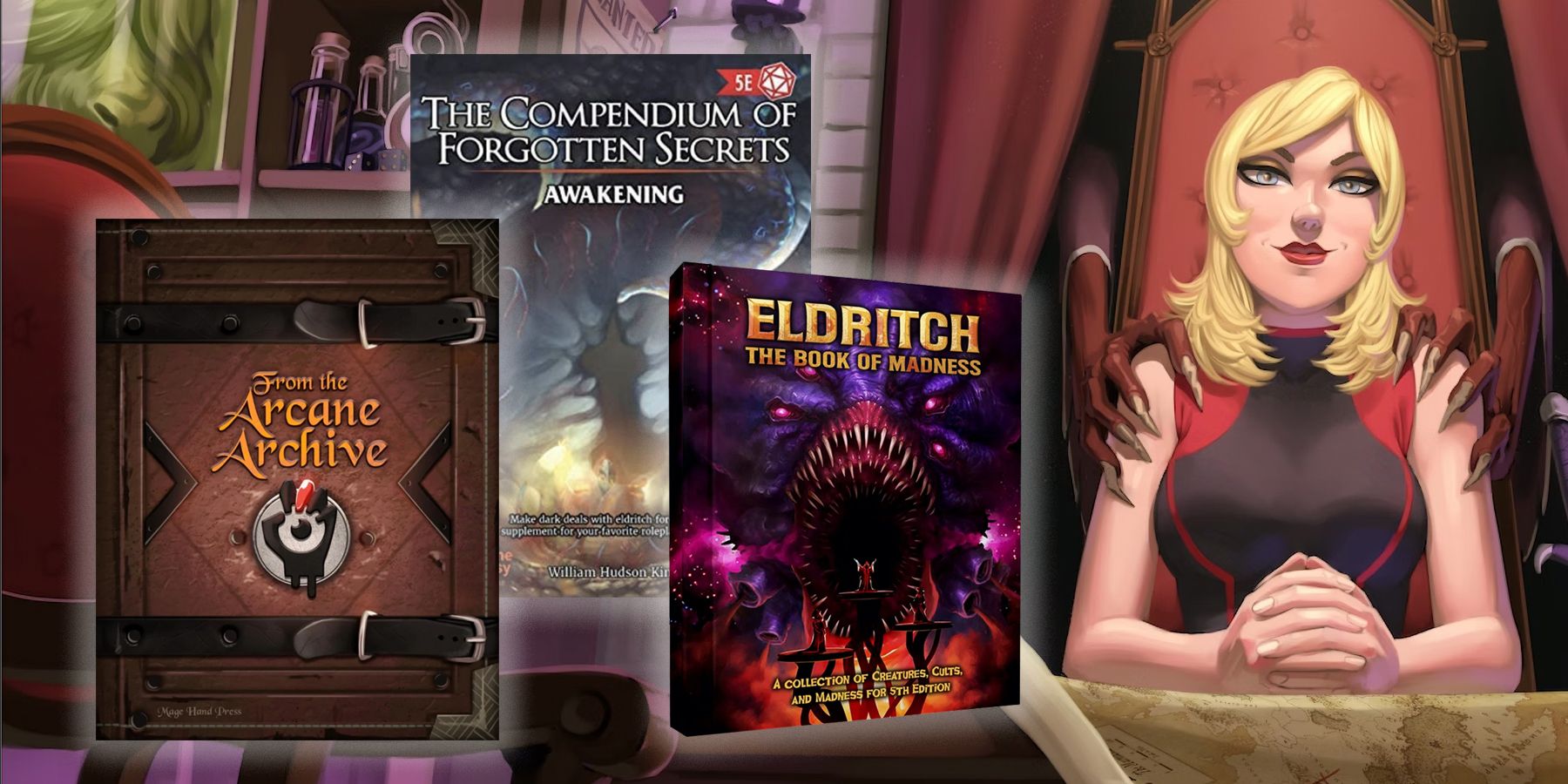
Best Third Party Books for D&D 5e, Ranked
The world of Dungeons and Dragons offers plenty of content, but these fan-made additions allow players to expand their worlds even more.The Illithids are the mortal enemies of the Gith races because they enslaved them for eons, and any story or game that involves the two will see them at odds unless they're forced to work together by some extreme circumstance. They're average size, but they aren't fighters, using their psionic abilities to damage or incapacitate their humanoid victims before devouring their brains.
20 Githyanki
Mordenkainen's Tome Of Foes
- Origin or Homeland: Currently the Astral Plane and other locations, but the origin of the species is unknown.
- Size: Medium
- Bonuses: Strength +2
A popular companion in Baldur's Gate 3 is La'zael, a fierce warrior armed with a big sword and fanatical devotion to her Queen. The latest addition to the Baldur's Gate video game franchise didn't invent or introduce the fearsome Githyanki but their appearance in the game put them on the map.
This species was enslaved by the mind flayers but rebelled and escaped, which explains their mutual animosity. Githyanki lore plays an important part in the storyline of BG3 because of the Illithid connections as well as their ability to ride dragons and travel on the astral plane.
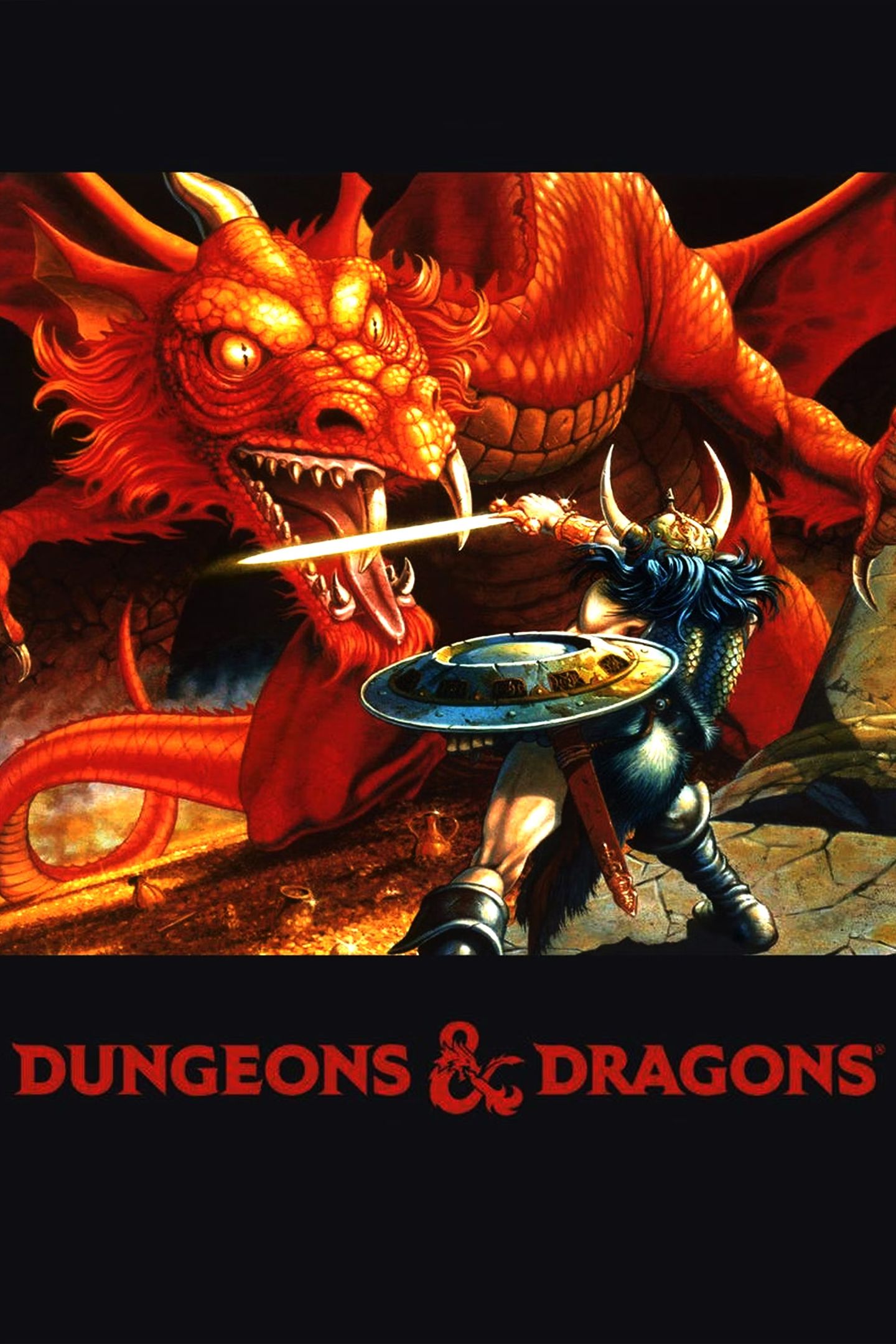
Dungeons & Dragons
- Creation Year
- 1974
- Created by
- E. Gary Gygax , Dave Arneson
- Movie
- Dungeons & Dragons: Honor Among Thieves

